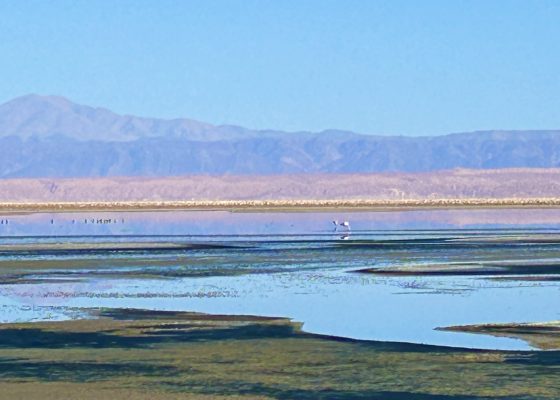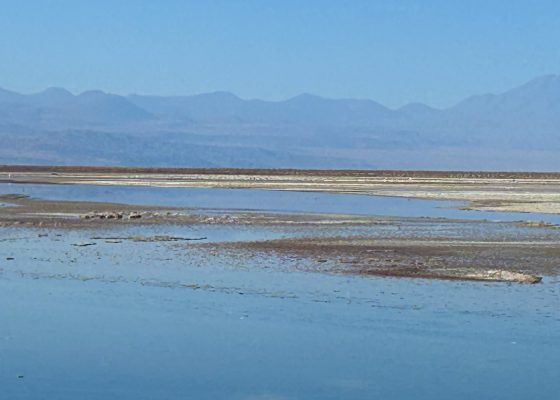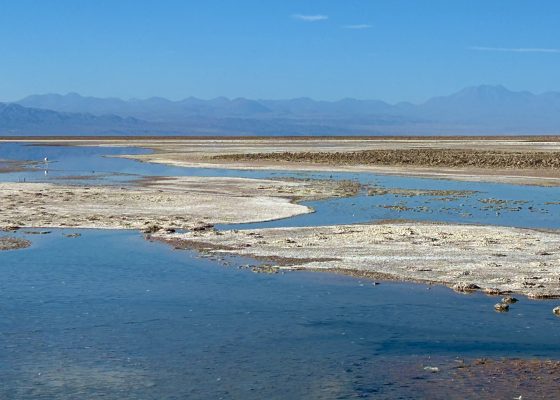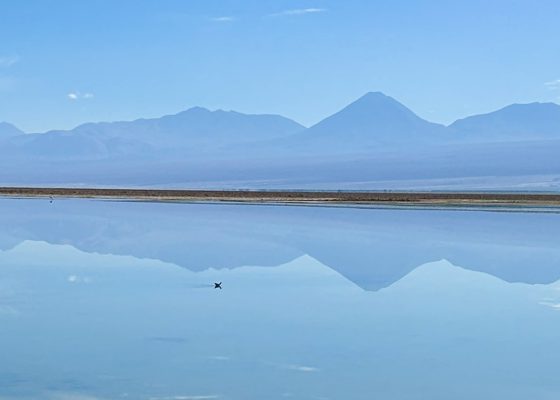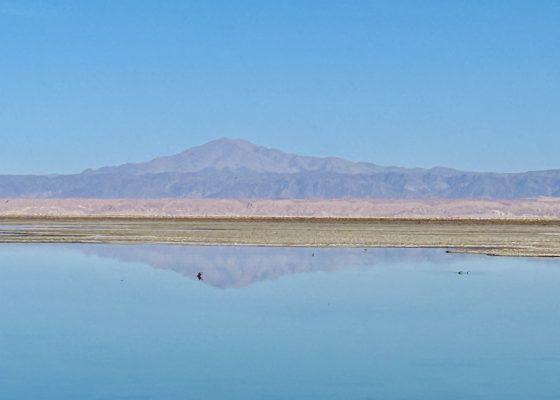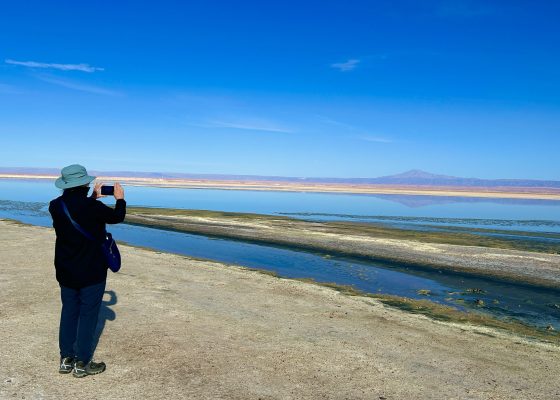Atacama Desert – Chile’s Arid Wonderland
In my introductory post on the Adventures Abroad Chile trip, I emphasized what I called the big three – Torres del Paine, the Atacama Desert and Easter Island as being the quintessence of this amazing country. Well Torres del Paine certainly lived up to its star billing and in this and the next post we’ll be putting the Atacama desert to the test. Join our intrepid group as we explore the many landscapes of the second driest place on earth.
The Atacama Desert – What and Where?
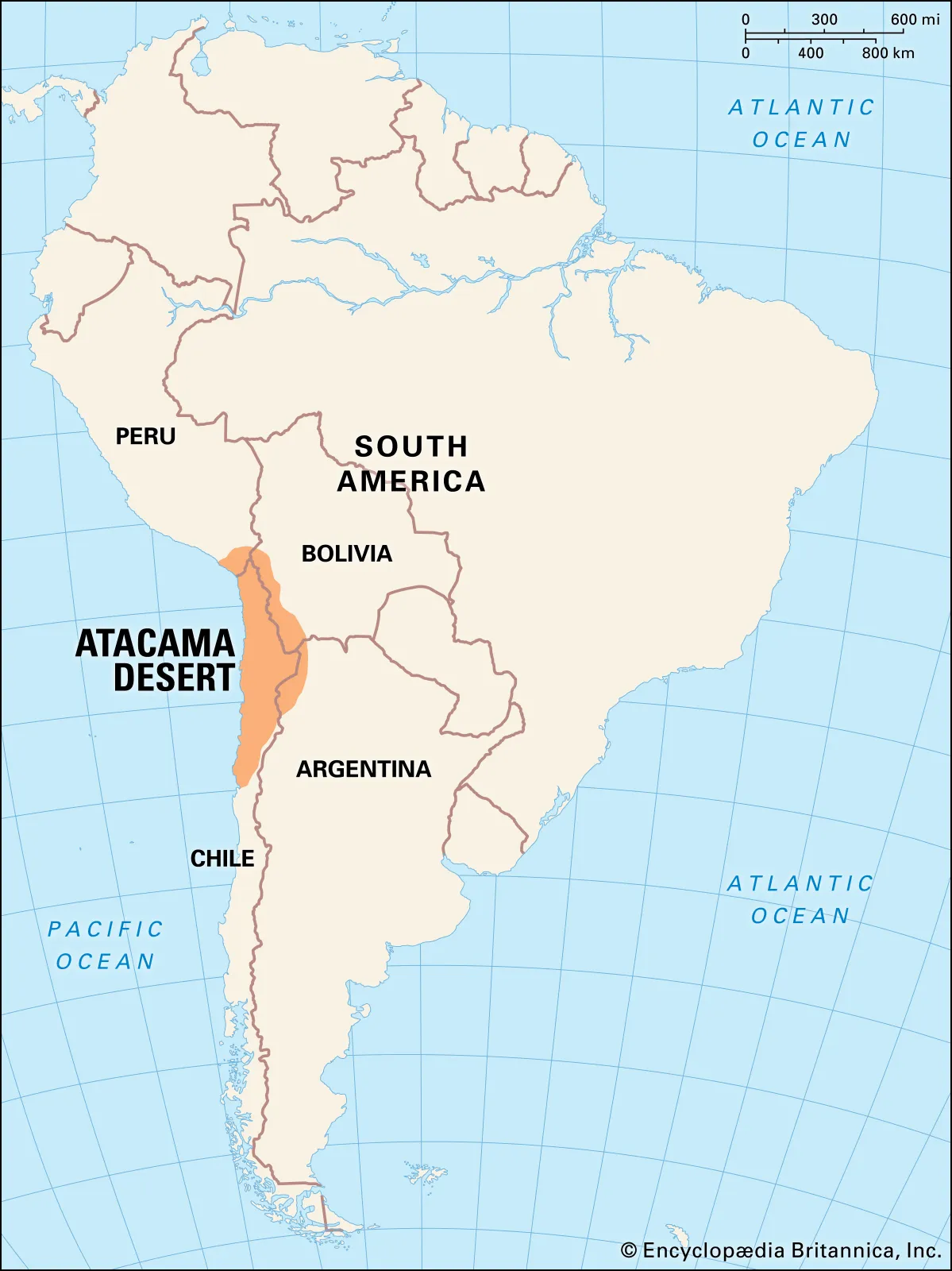
The Atacama Desert stretches over 1,600 kms. (1,000 miles) between the Andes on the east and the Pacific coast on the west in northern Chile and even includes parts of Peru, Bolivia and Argentina. Outside of a few spots in Antarctica which few people will ever see, it is the driest place on planet Earth. There are places within it that have never recorded rainfall. Yet, it has an incredible diversity of landscapes and eco systems which I was about to find out during our three day stay in San Pedro de Atacama, a small town of only about 5,000 inhabitants which is the tourist centre of the region.
Getting to San Pedro de Atacama is no easy task. We had to first drive back to Balmaceda from Puerto Chacabuco and catch a flight to Santiago. From there we took another flight to Calama making for a total distance of 3,722 kms. (2,036 miles) and we still had to drive for more than an hour to reach San Pedro de Atacama, which incidentally lies at an elevation of over 8,000 feet. So, as travel days go, this one was a doozy, but it had a very rewarding end.
Hotel Cumbres de San Pedro Atacama
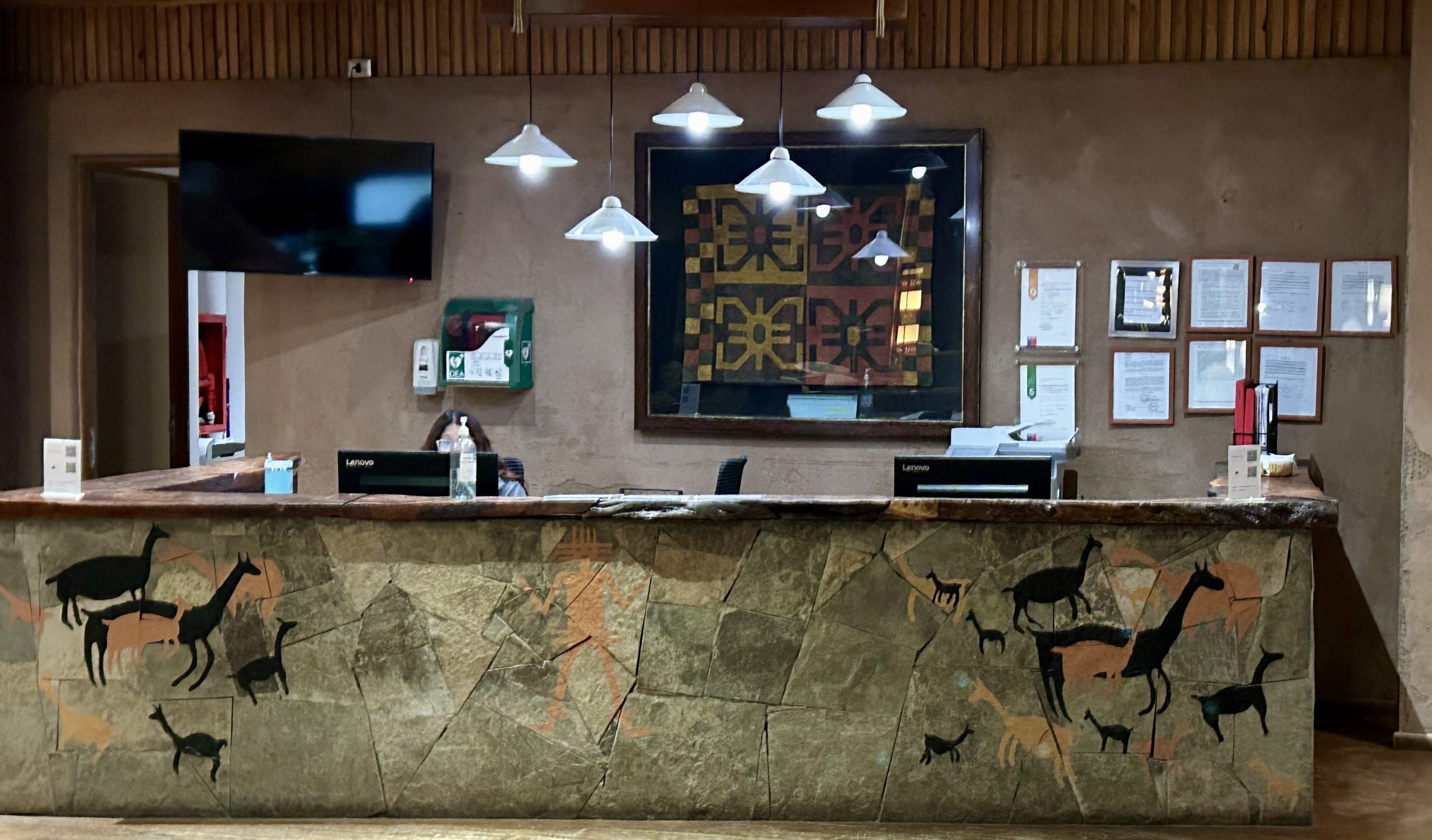
Adventures Abroad continued its streak of exceptional lodging with the Hotel Cumbres de San Pedro which is a sister hotel to the one we stayed at in Puerto Varas and if anything, was even nicer. Built almost entirely of stone, the prime building material in an area almost totally devoid of trees, the hotel features local artwork throughout.
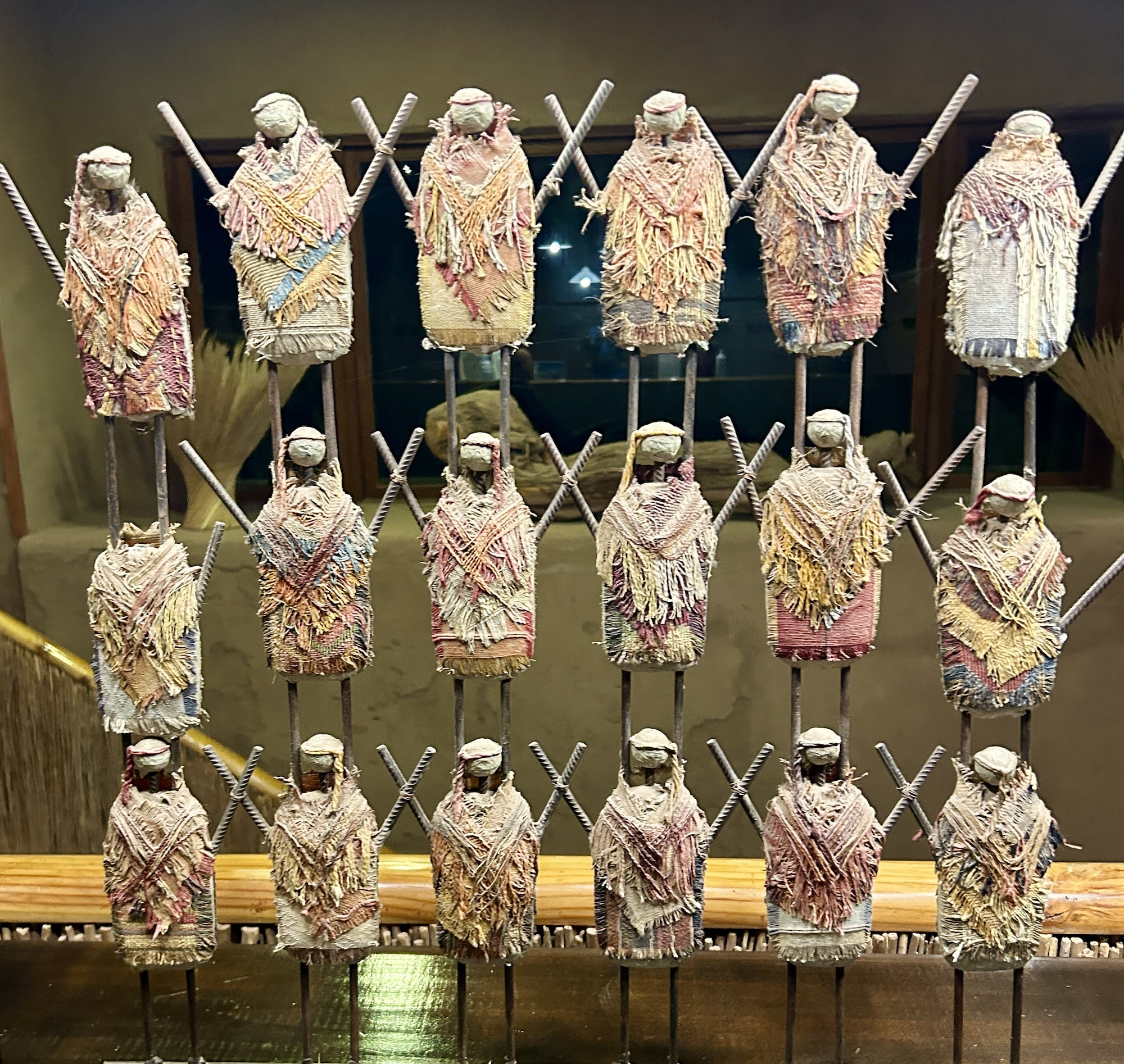
The dining room was a welcome sight after the long travel day.
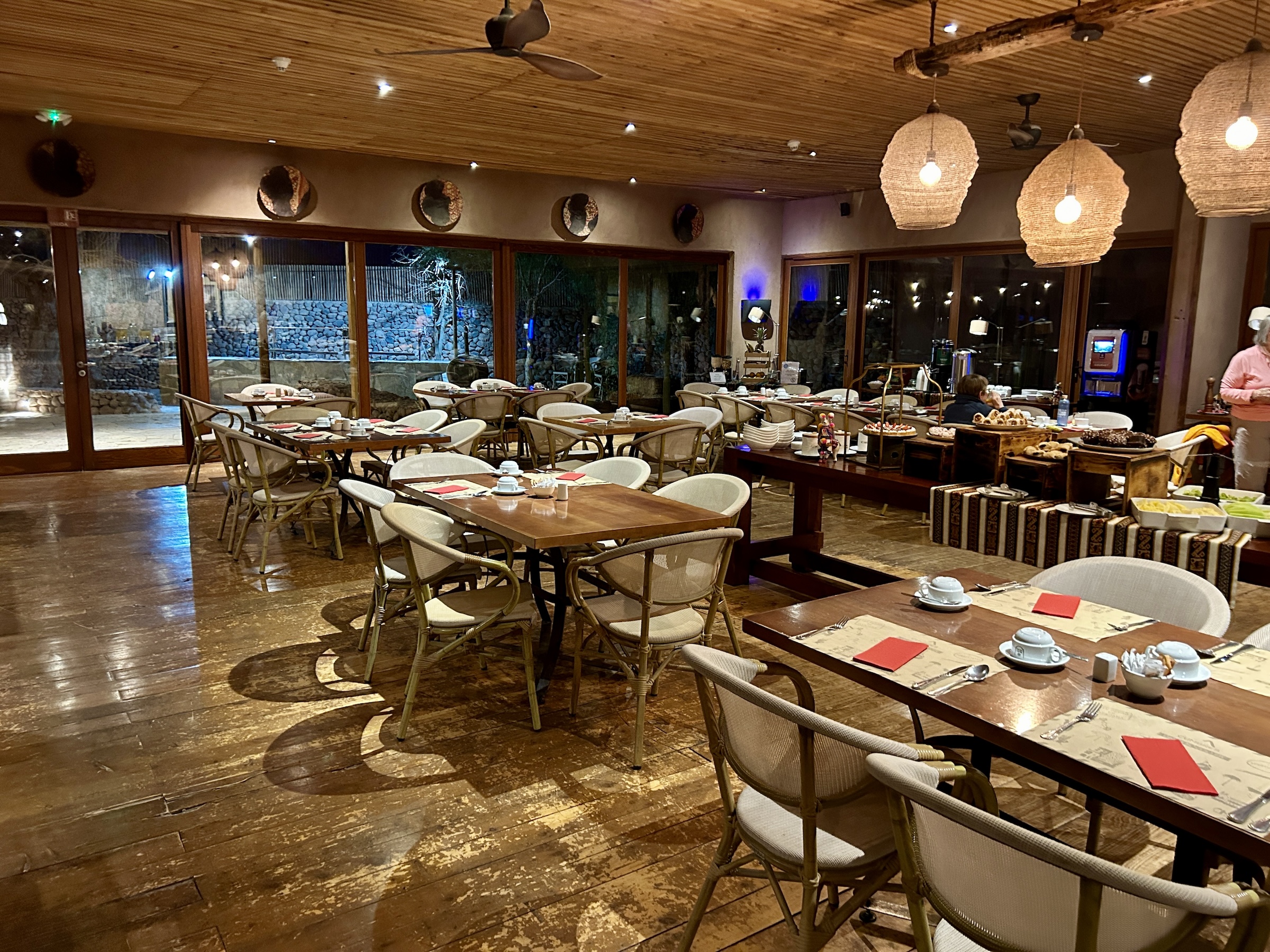
As was the bar after dinner.
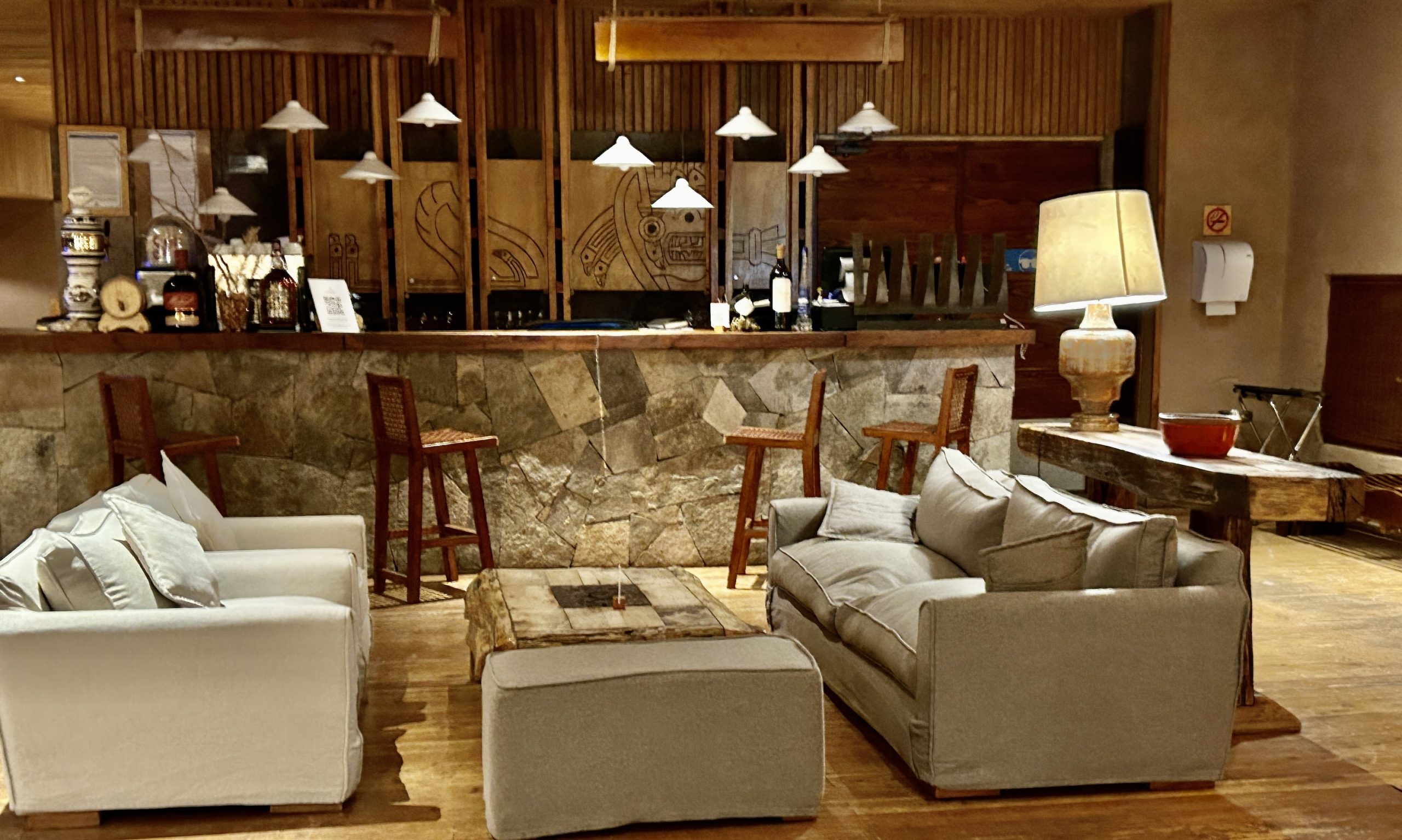
The rooms were very large with interesting bathrooms where the stone acted as a natural coolant to the searing heat outside.
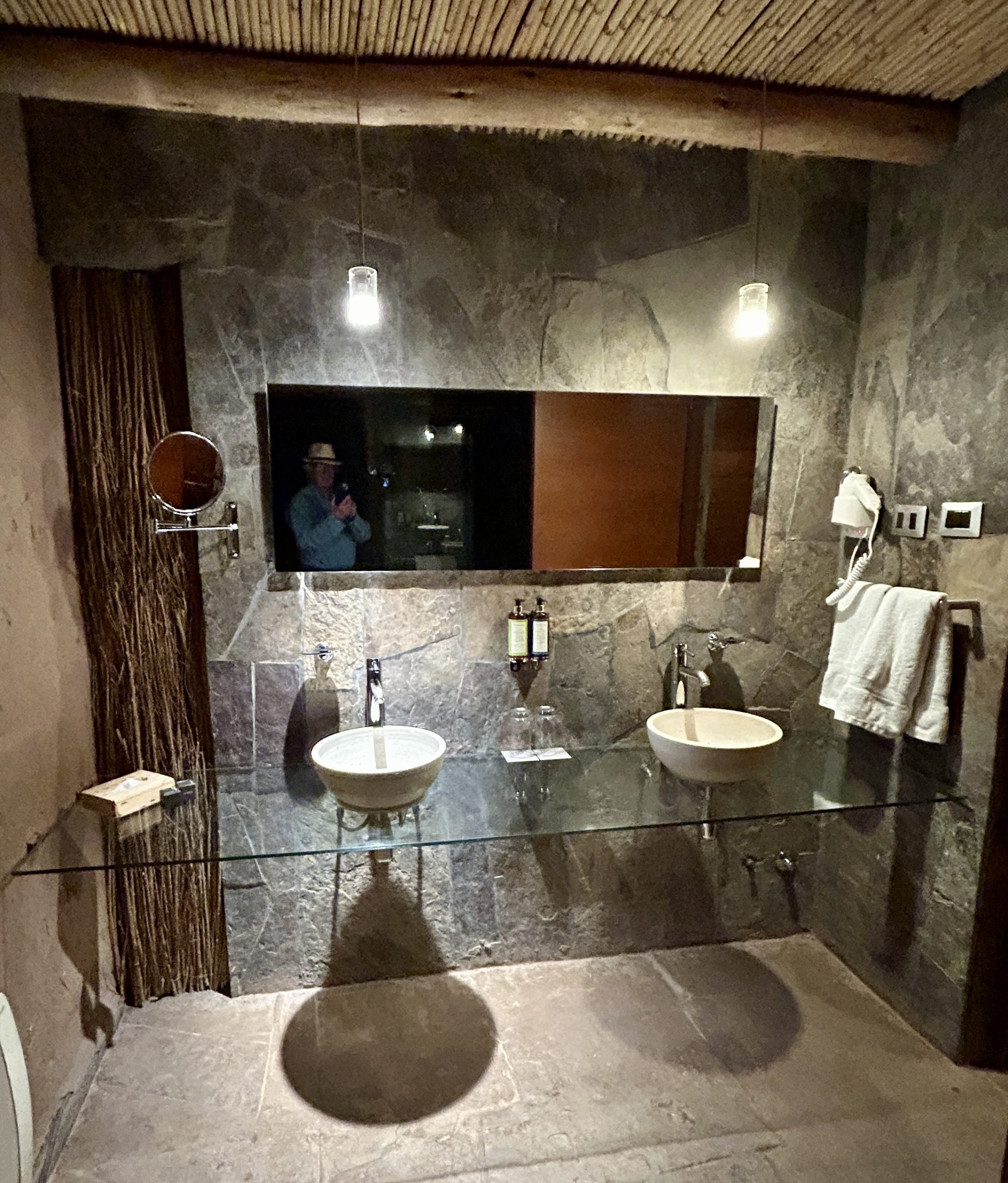
However, if you enjoyed al fresco showering that option was available as well.
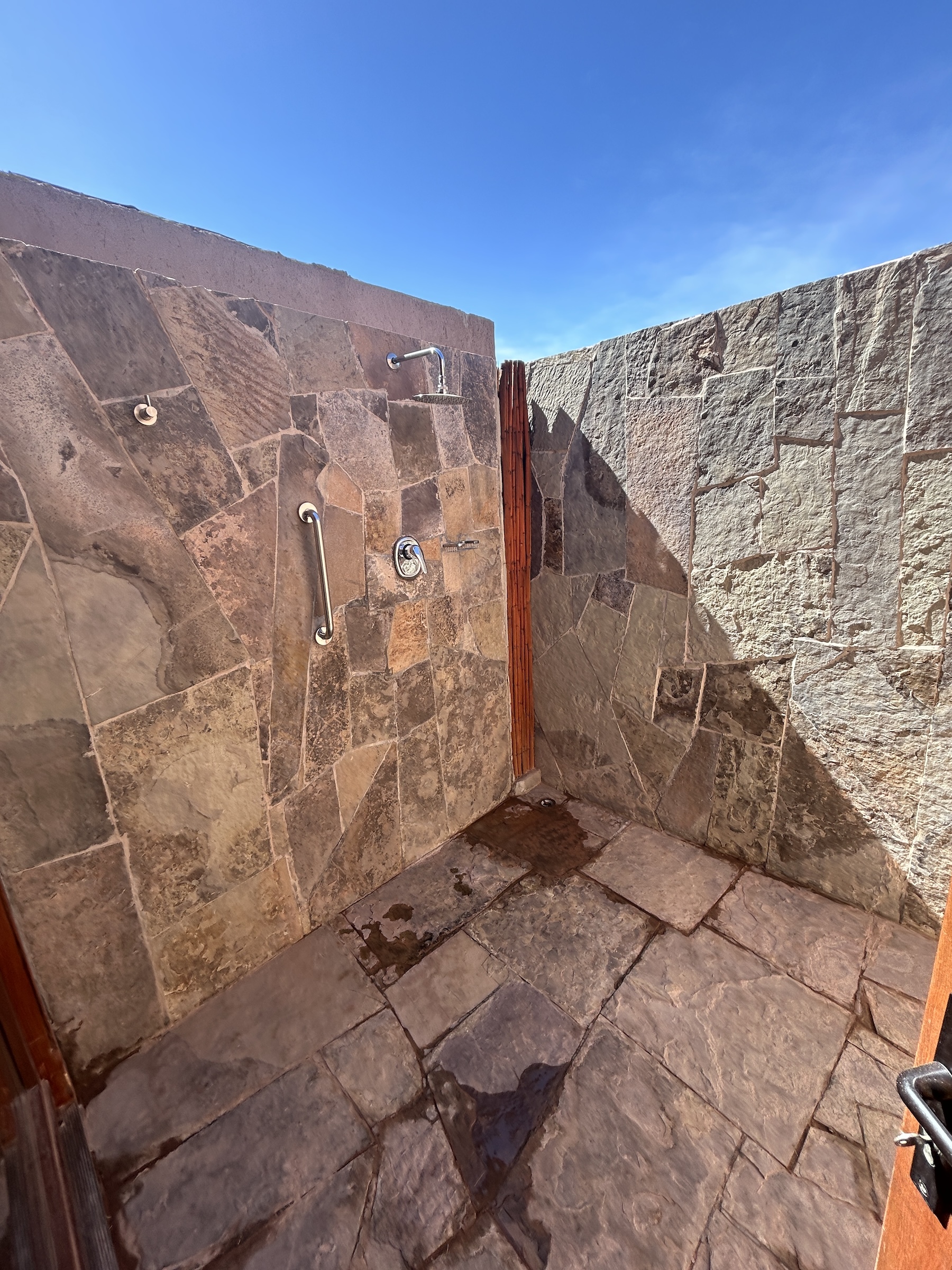
After a great night’s sleep, Alison and I were more than ready to begin our exploration of the Atacama desert.
Los Flamencos National Reserve
Somewhat paradoxically we will begin our Atacama adventure by visiting a place filled with water. Los Flamencos National Reserve consists of seven distinct sections in the Atacama desert that all include water features of one kind or another. The Soncor section, where we meet our local guide Valentin, is comprised of four salt lakes that are the habitat of Chilean and Andean flamingos. Valentin is one of the nicest and sincere young man I have come across in my travels and he definitely added considerably to our stay in the Atacama area.
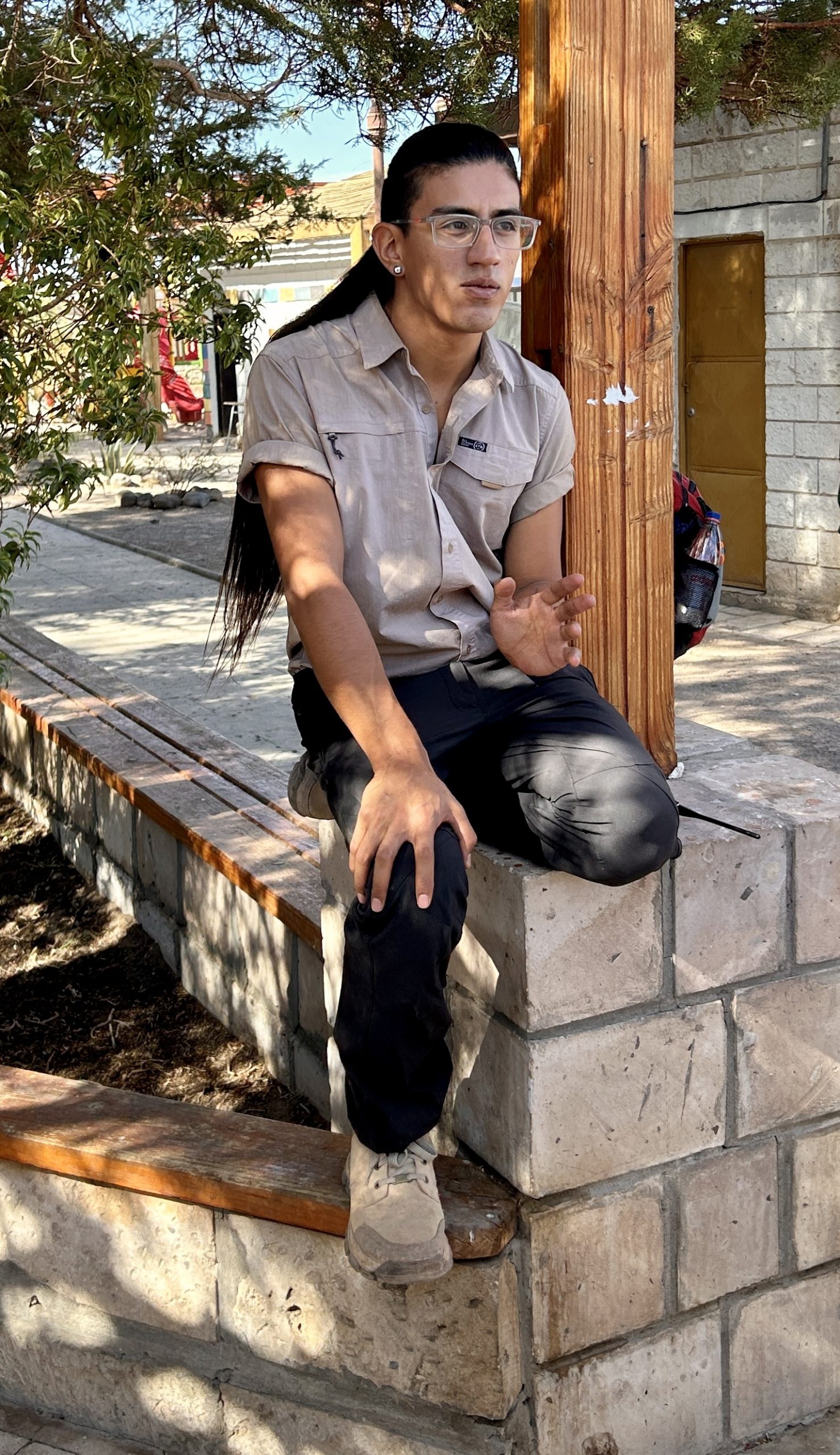
We are here to see the flamingos and other wildlife that can survive in this most extreme environment and Valentin cautions us that it is imperative to remain as quiet as possible as we head out onto the paths between the salt lakes. The flamingos are there, but not in great numbers. This is an Andean flamingo, which by body weight is the largest flamingo in the New World.
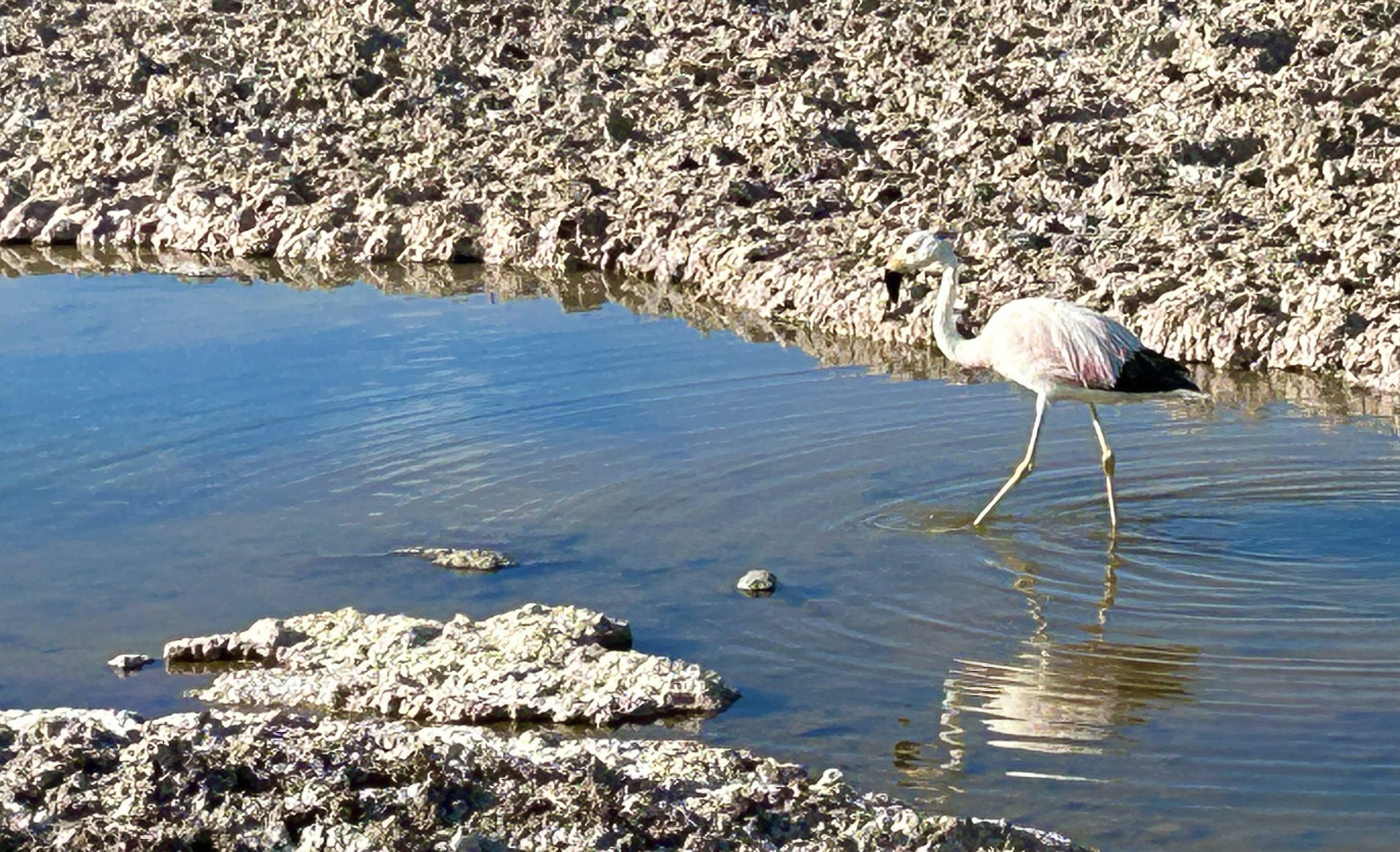
There are other species here as well including this quite well camouflaged puna plover which is limited to the salt flats and marshes of the Andes and is another life lister for me.
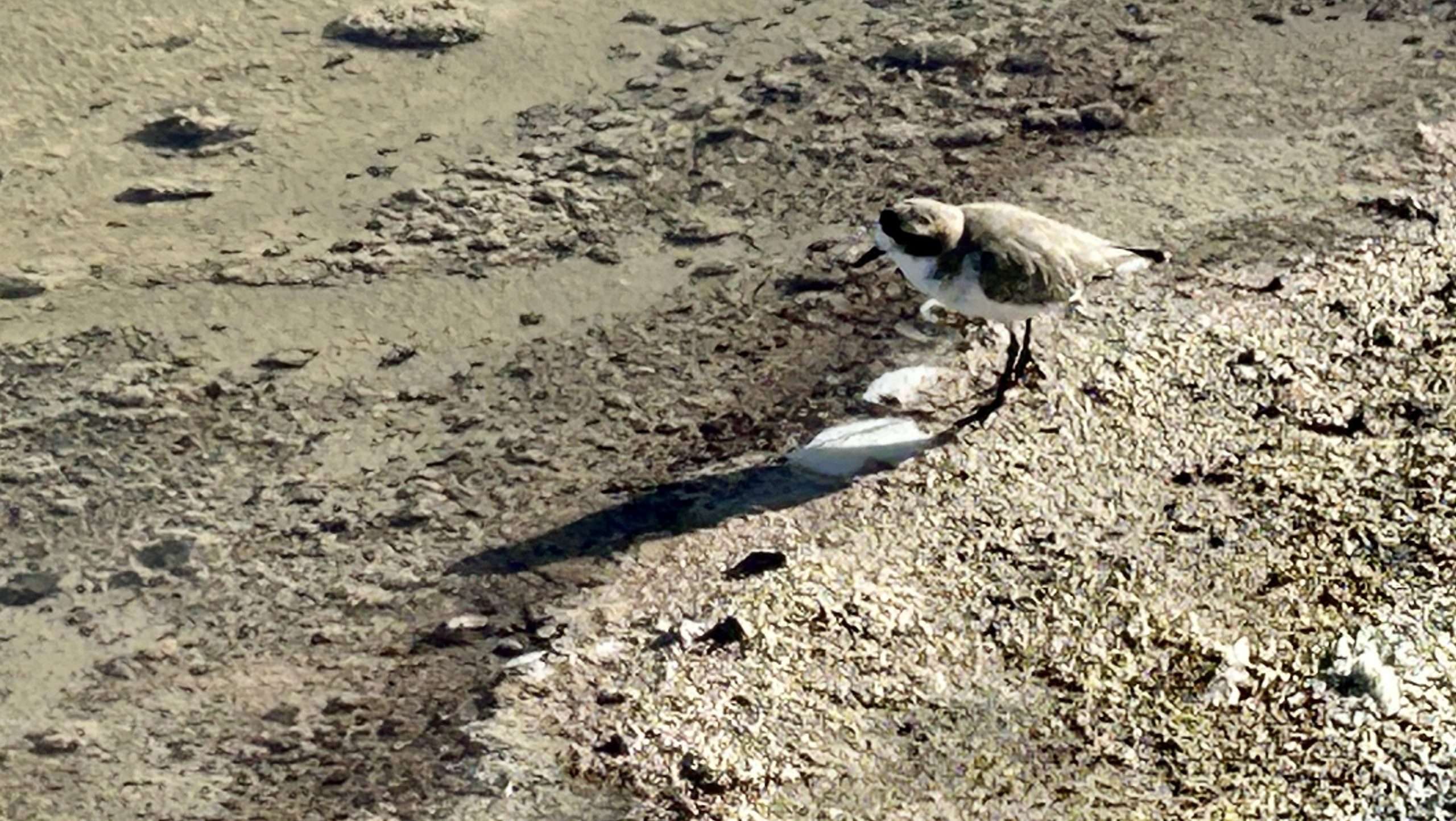
Birds aren’t the only animals to be found at the Soncor salt lakes. This is Fabian’s lizard, that is only found at high altitudes in this area of Chile.
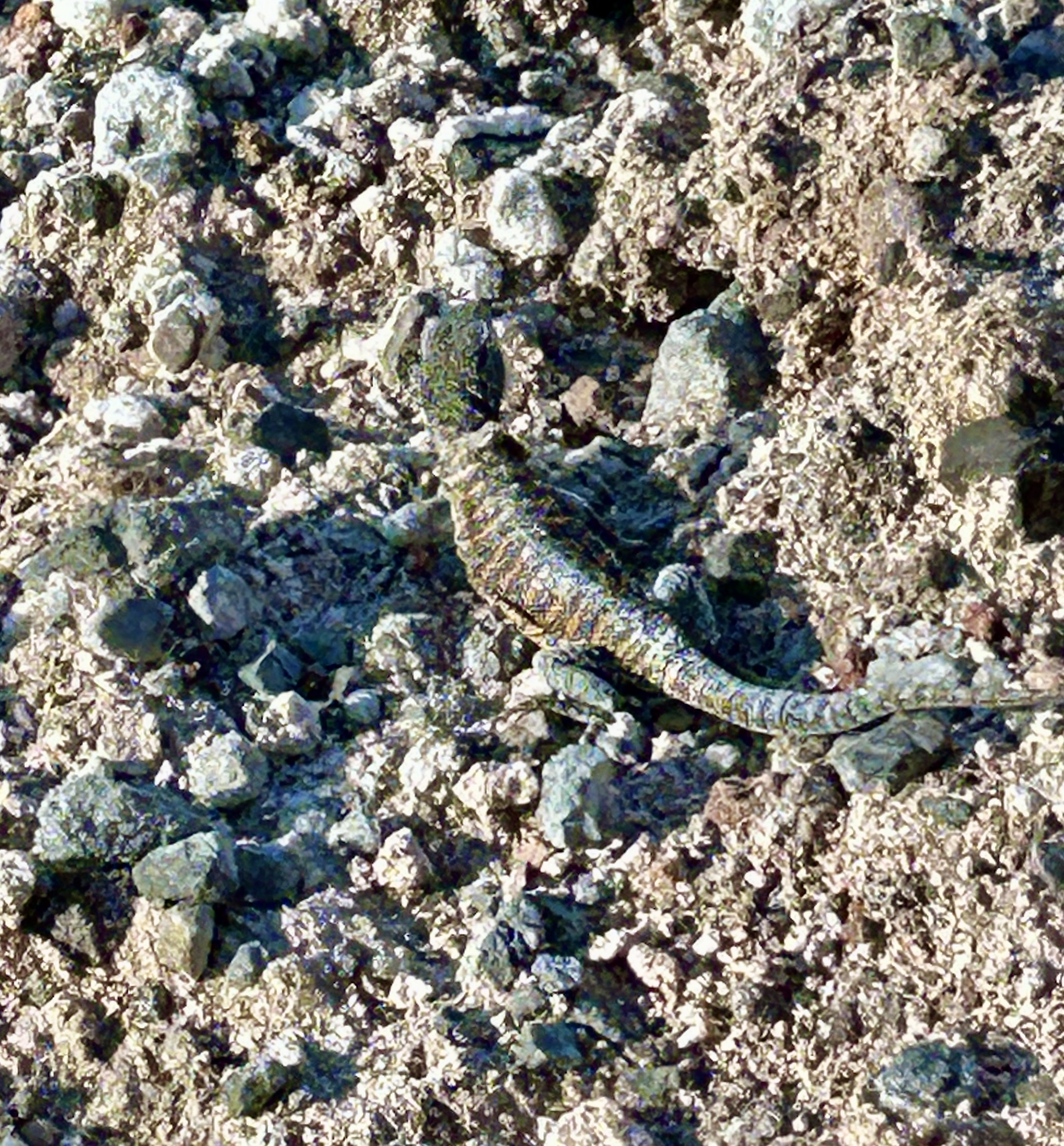
However, it is not the wildlife of these salt flats that was the most striking to me – it was the absolutely unearthly landscape of the Atacama desert. The salt lakes were framed by mountains in all directions and the reflections and contrasting colours were unlike anything I have ever seen before. Here is a small gallery I took with my iPhone because I stupidly forgot to check the battery on my Nikon which of course was dead. So the resolution is not the best, but I think this gives an idea of how special this place is. Double click to open a photo and double click again to enlarge.
- Landscape 1
- Landscape 2
- Landscape 3
- Landscape 4
- Landscape 5
- Alison Photographing Los Flamencos
Toconao
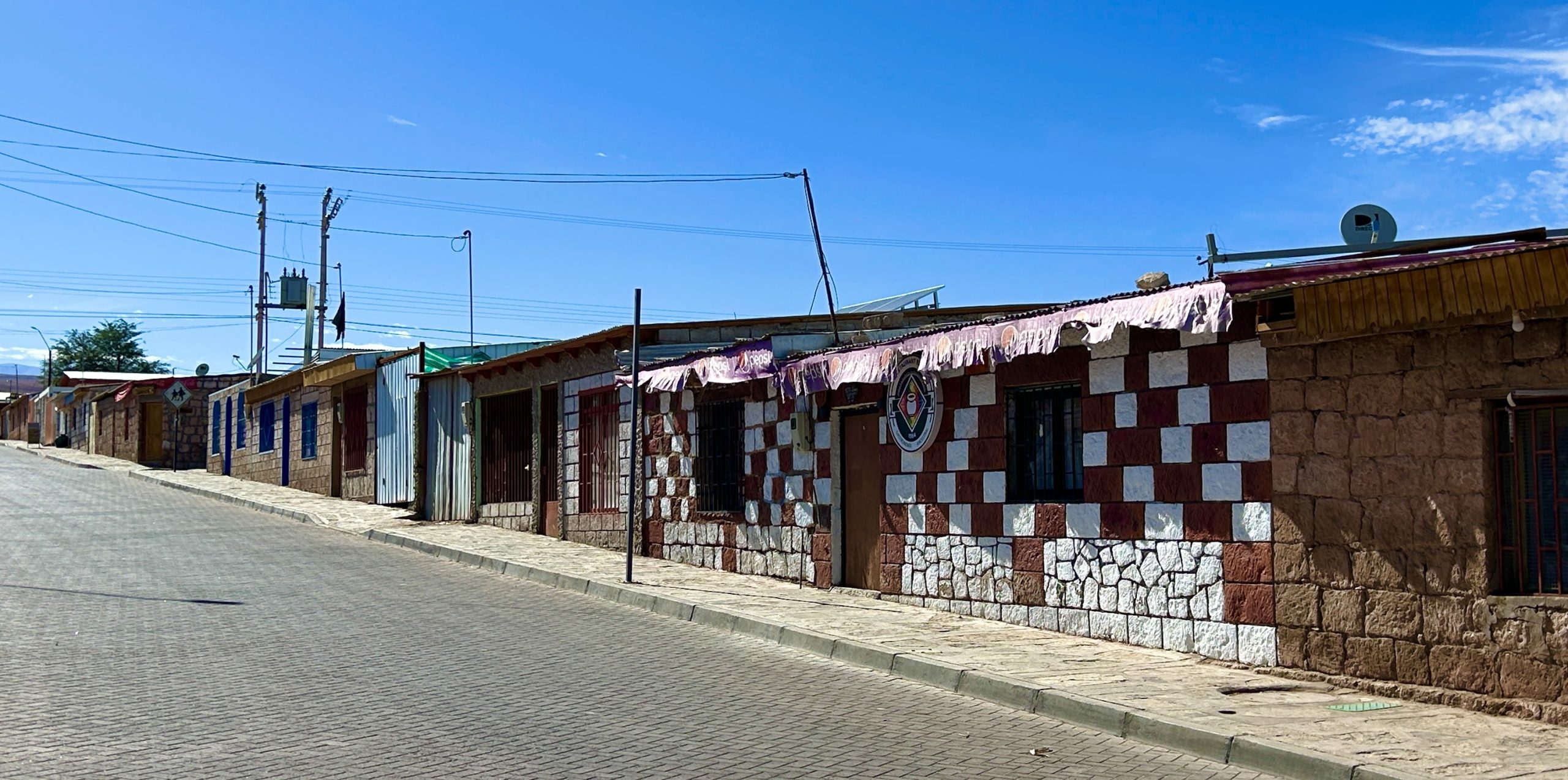
For our next stop Valentin took us to Toconao, a town that has roots that go back 12,000 years, thanks to the oasis that provides a steady source of water in an otherwise parched environment. All of the buildings are constructed of volcanic tuff including the bell tower that dates back to the mid-18th century and is a Chilean national monument.
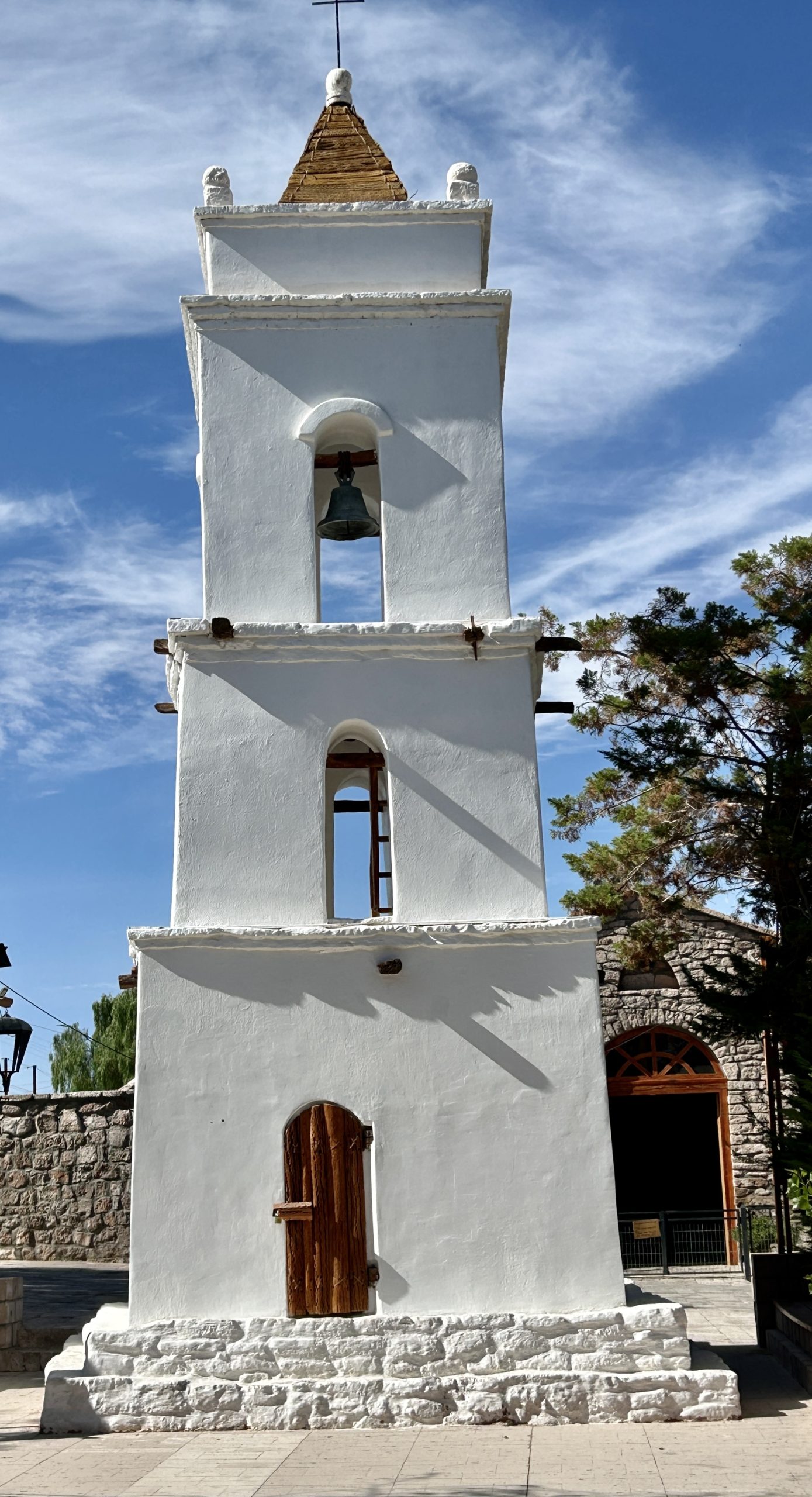
Behind it is the church which was built in 1744 using all local materials. Since there are very few trees, where did they get the wood from? The answer surprised me and probably most people who don’t live in a desert – from cactuses. Yes, some species of cactus actually have a wood core that is quite durable and that’s what the Spanish who built this church used, no doubt after learning about cactus wood from Indigenous peoples who had been inhabiting the oasis for thousands of years.
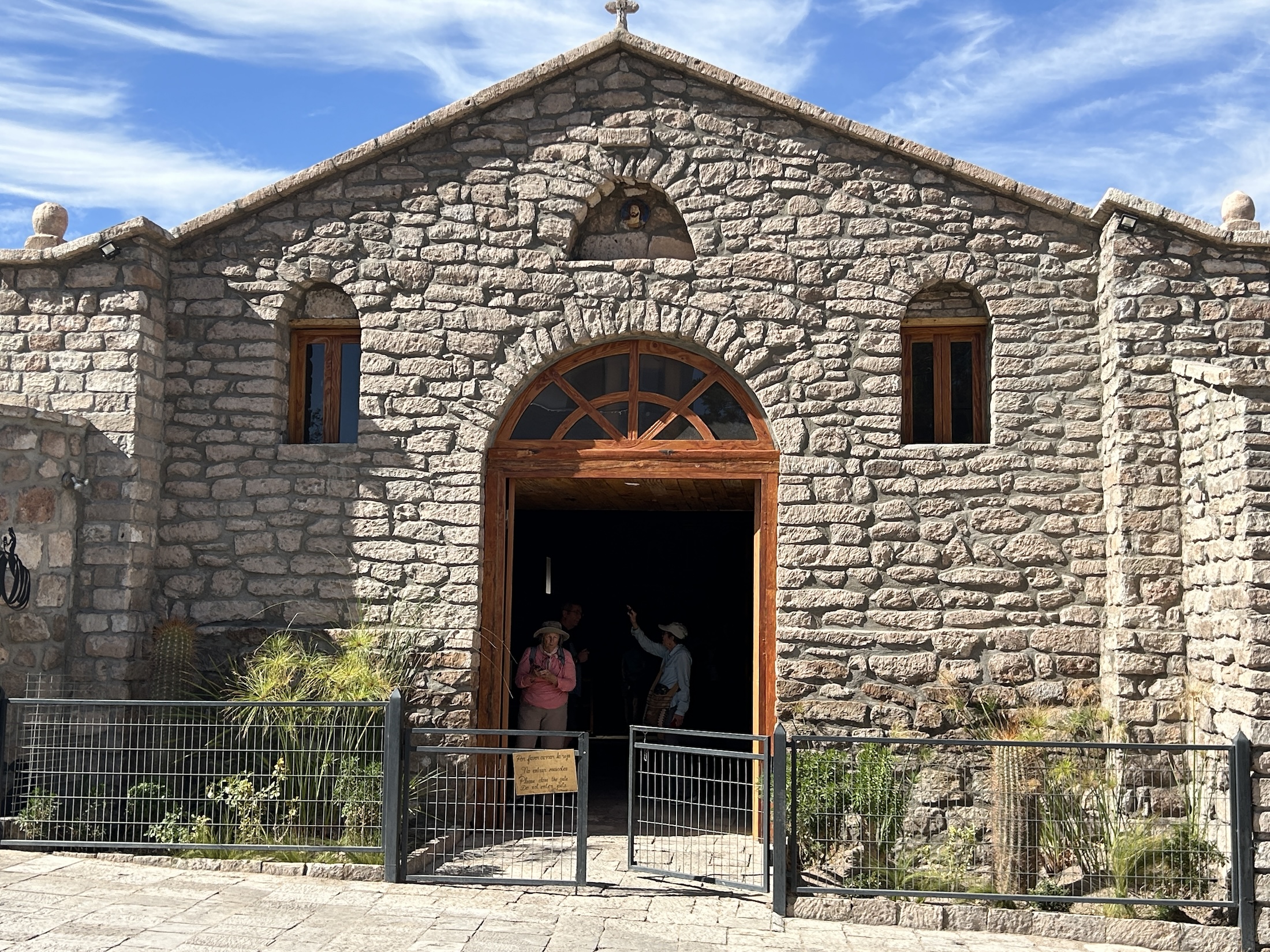
In the plaza where the bell tower is found Valentin shows us leucostele atacamenis aka cardón, the species of cactus native to the Atacama desert that can grow up to 20 feet high and is the source of the wood used in constructing the church.
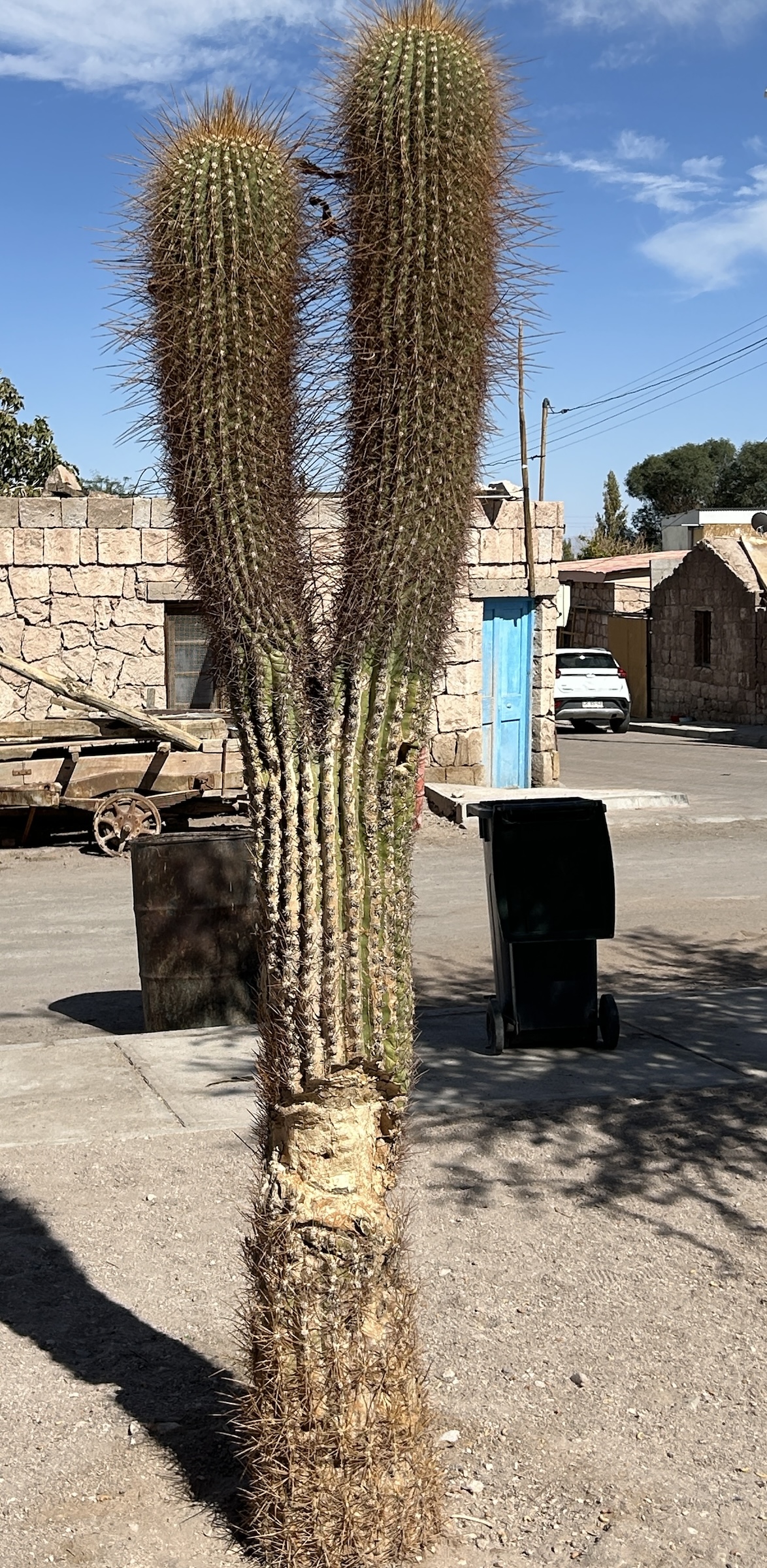
We haven’t been visiting as many churches as we usually do in Latin American tours, so let’s drop into this one. At the entrance is this quite unusual modern portrayal of Jesus which I assume was placed here by an order of nuns known as the Missionaries of Jesus the Word and Victim (MJVV). This order was founded in Peru in the 1930s and is restricted to southern South America and Cuba. Their purpose is to tend to the needs of rural people who do not have a local priest, of which Toconao is one.
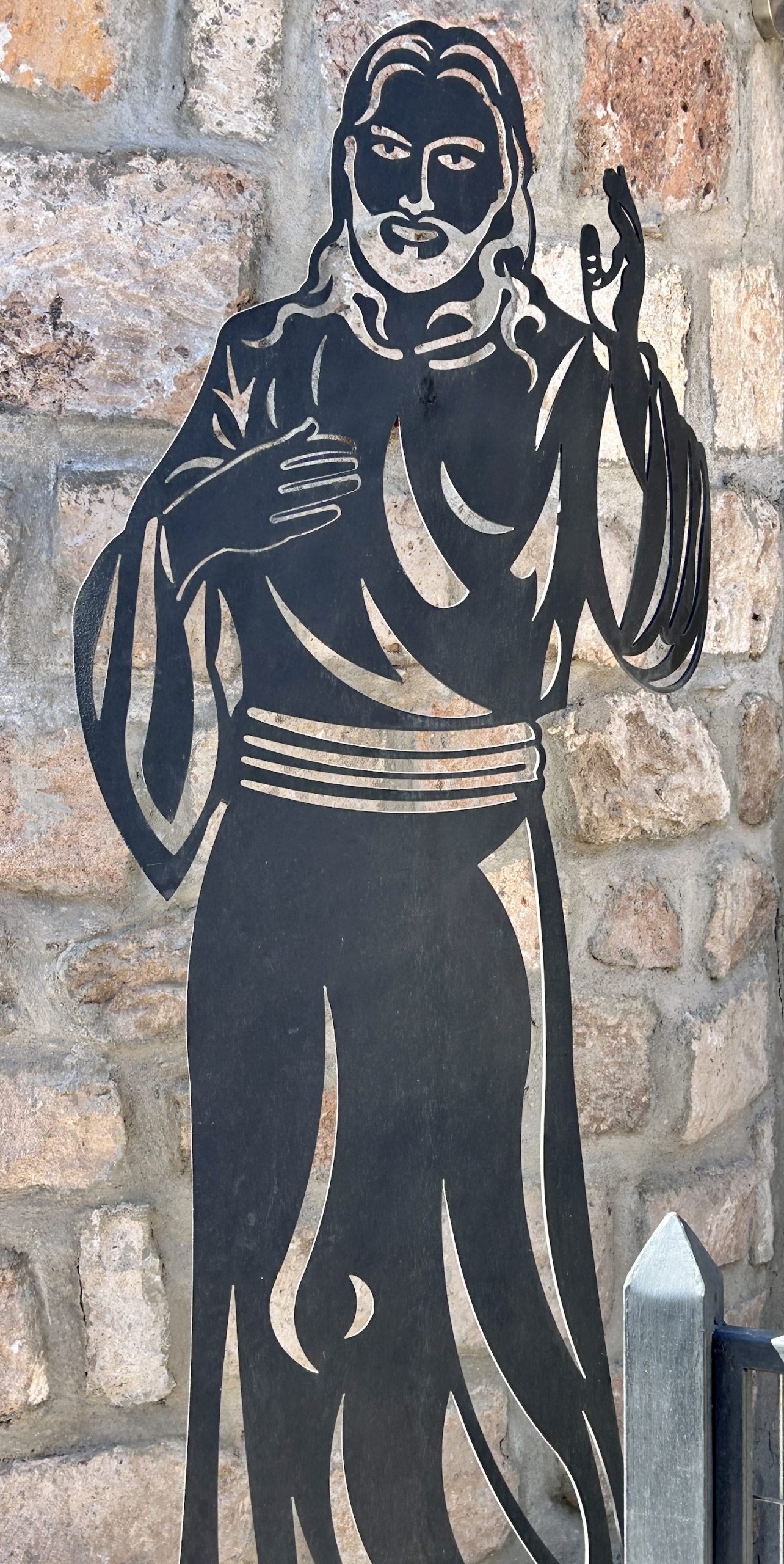
Here is the church interior with the cactus wood roof.
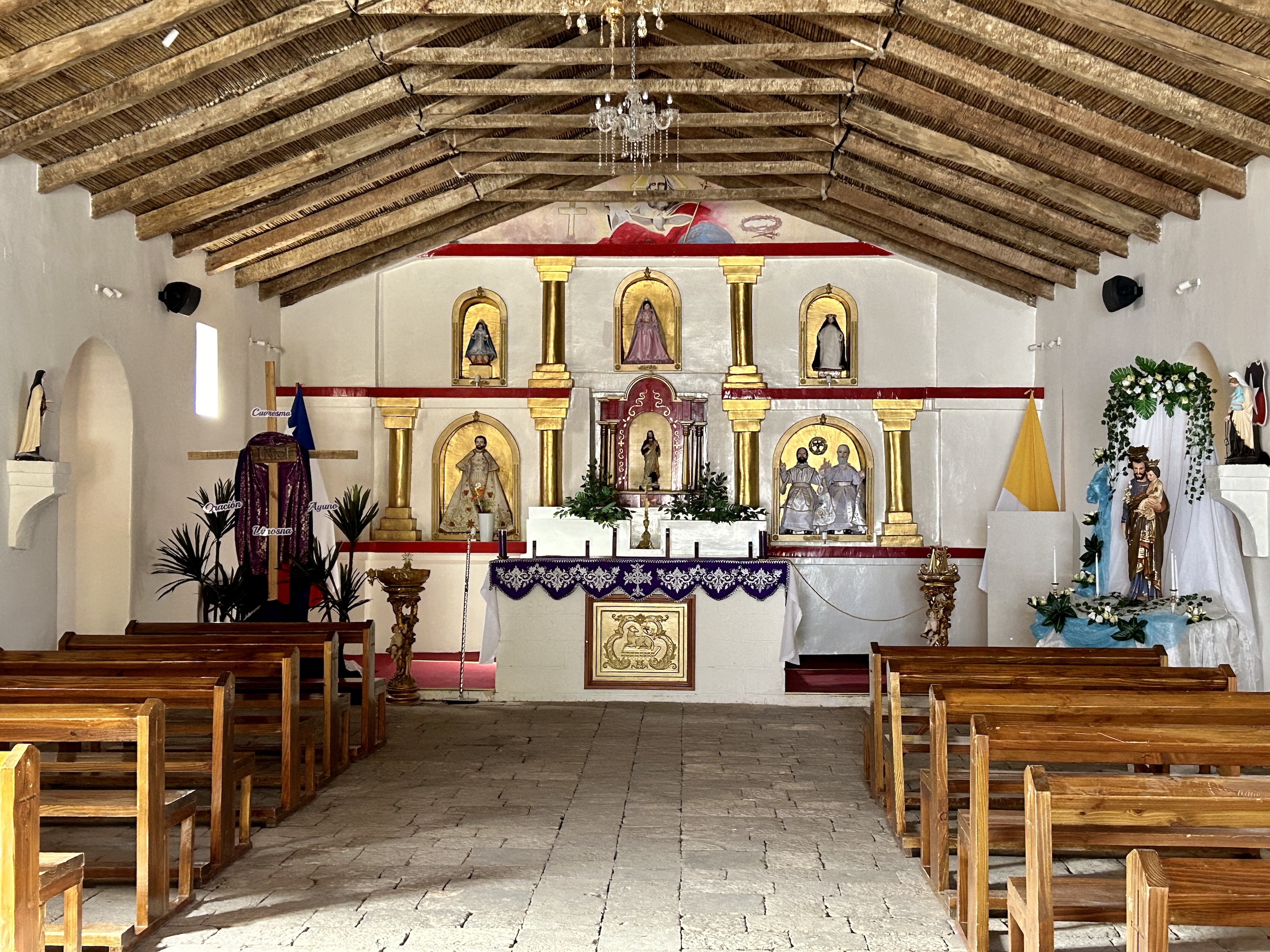
There are a number of interesting statues inside including this one of San Isidro, the patron saint of farmers.
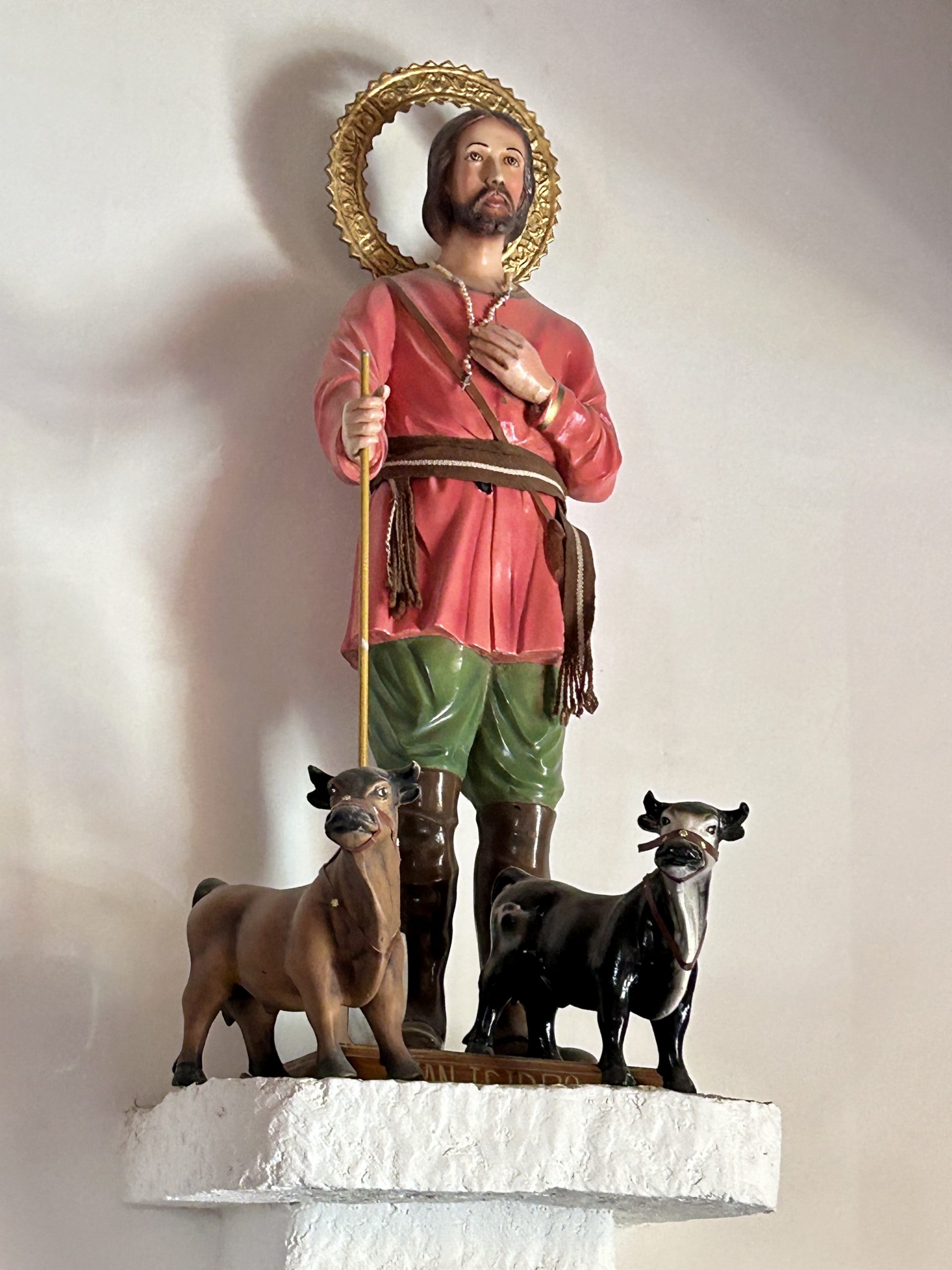
Back outside there is nary a person in sight, not even a nun. This dilapidated truck might be the town’s mascot.
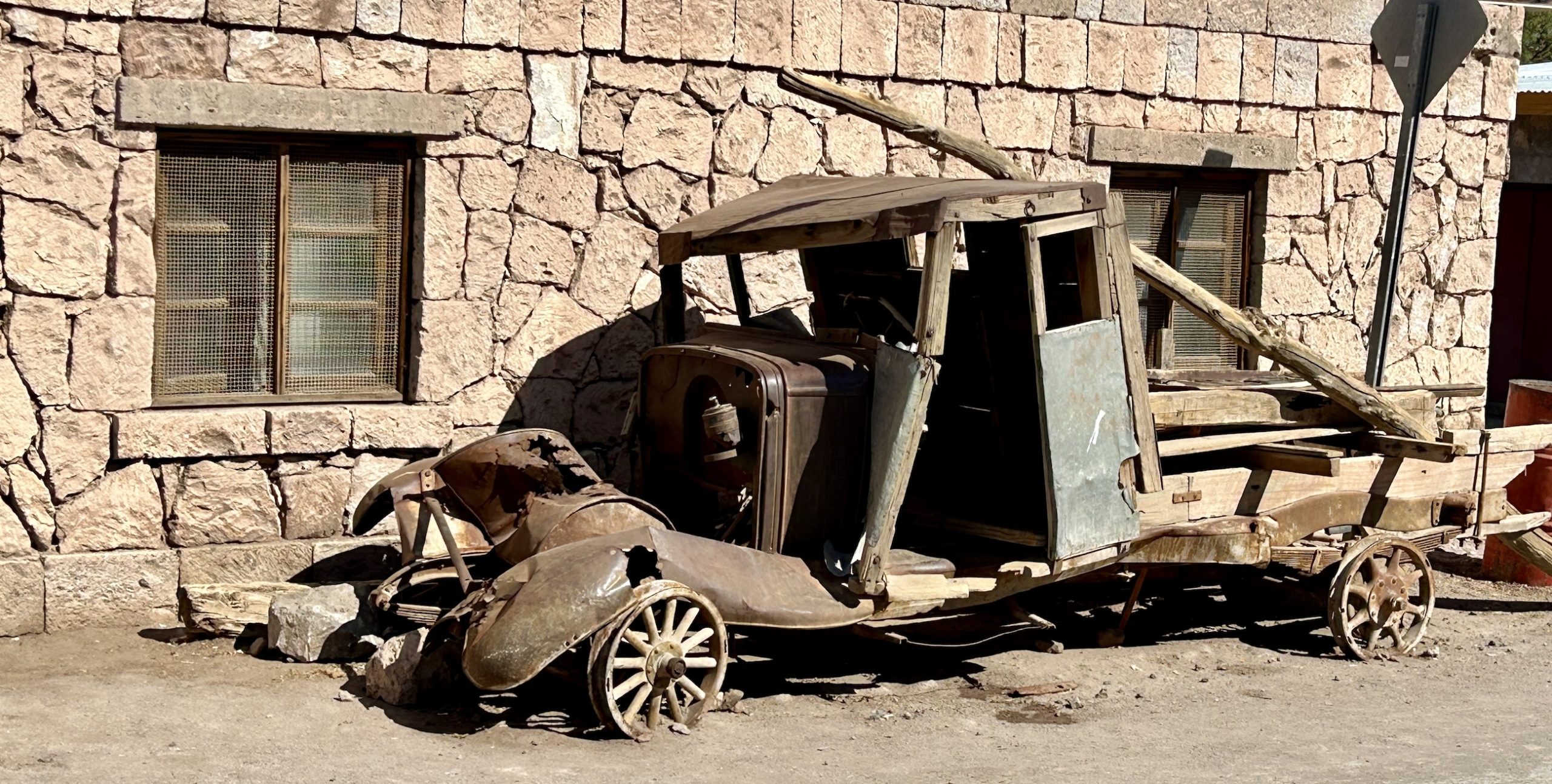
While there might not be any people around, Valentin does manage to find a few four-footed friends. I had no idea that llamas had such gorgeous eyelashes.
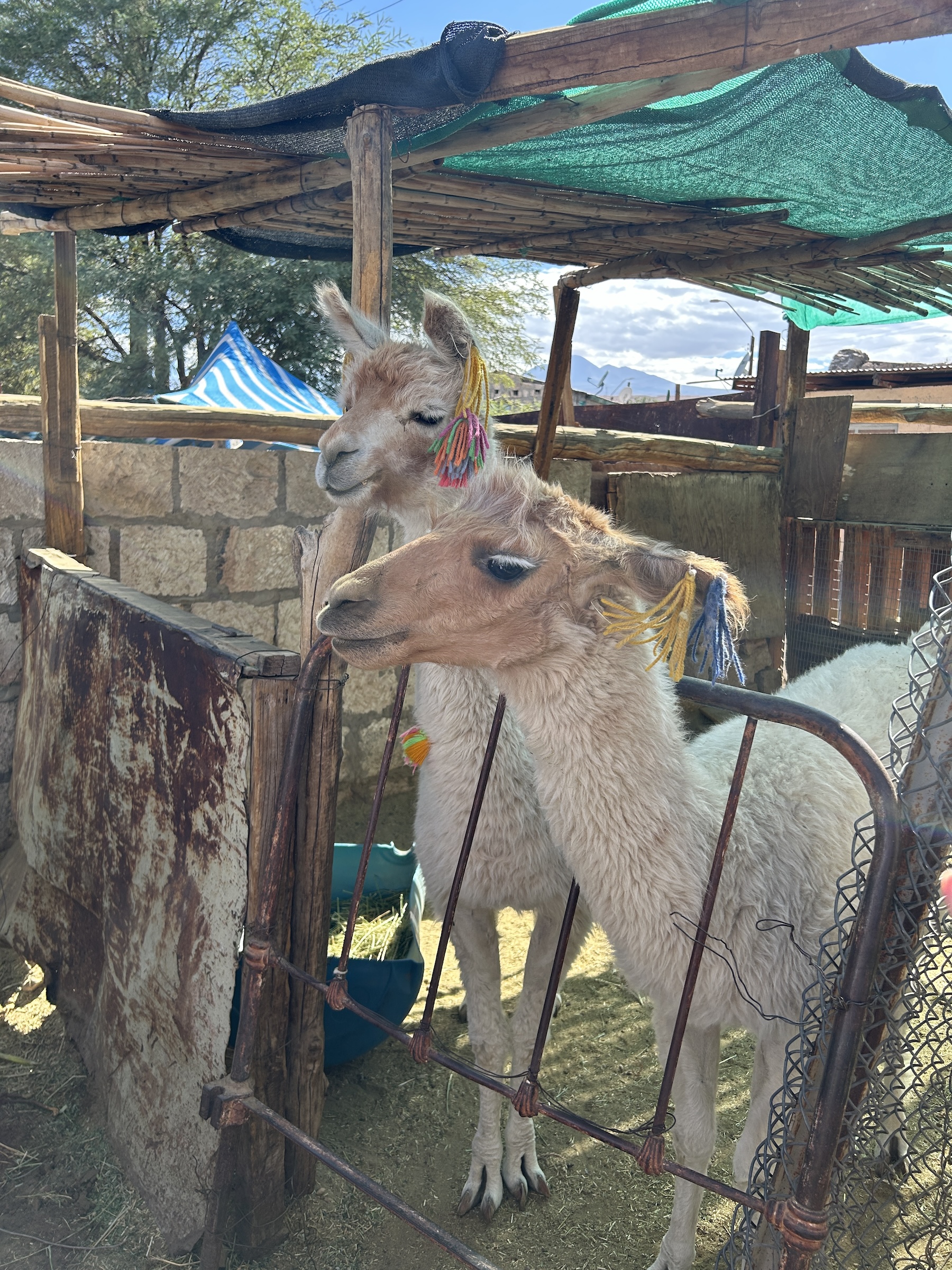
Pucará de Quitor
If we haven’t been visiting many churches on this tour, so too with archaeological sites. Chile does not have the richness of Peru or Mexico in that regard, but it does have one very interesting place in the Atacama desert that was in effect, the Masada of Chile. Pucará de Quitor was a city and fortress built sometime between the 12th and 14th century by a people we know very little about. Generally referred to as the Atacameños, we do know that by the early 1500s the city was under Incan rule, but not occupied by Incans as was the case with many areas that came under their domain. In 1536 the Spanish conquistadors arrived and unlike the quick successes enjoyed against the Incans in Peru and Ecuador, the Atacameños held out for twenty years. When it was finally taken by Francisco de Aguirre, who was Pedro de Valdivia’s right hand man, he had 25 caciques or chiefs beheaded. The city site is off limits to tourists, but you get a good view of it as you climb to the spot where the final holdouts went down fighting.
Before starting out I took note of this sign indicating that the UV Index was at +11, the highest it can go. In these conditions unprotected fair skin will burn in only five minutes. SPF 50, a wide brimmed hat, sunglasses and lots of water are mandatory.
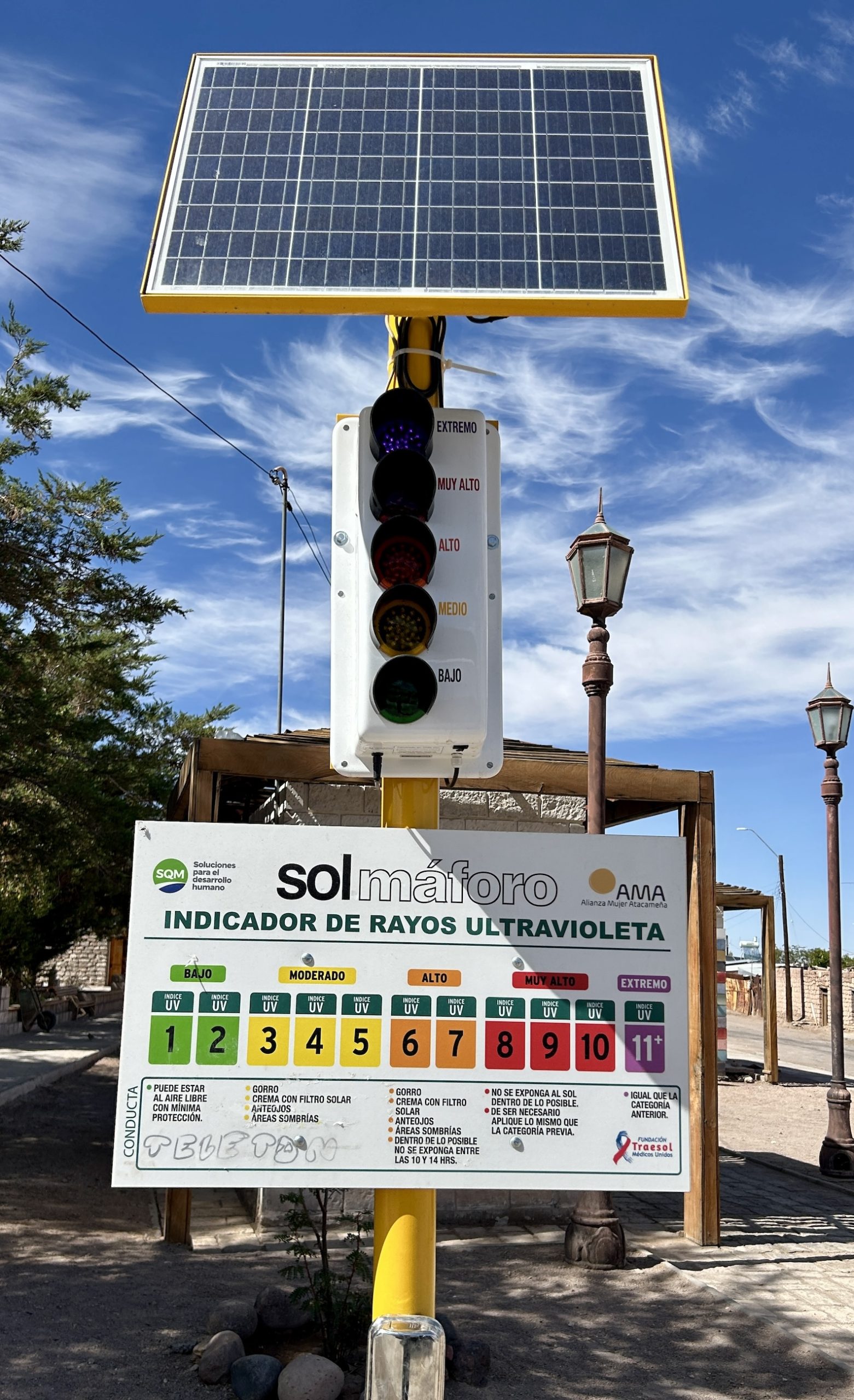
Valentin starts out on the path that will take us up another 620 feet in elevation to a height of over 8,500 feet with absolutely no shade under a burning sun, except for a few covered rest spots. Sounds challenging and to a certain extent it was with several people opting to stay behind and enjoy a beer or soda in the shade.
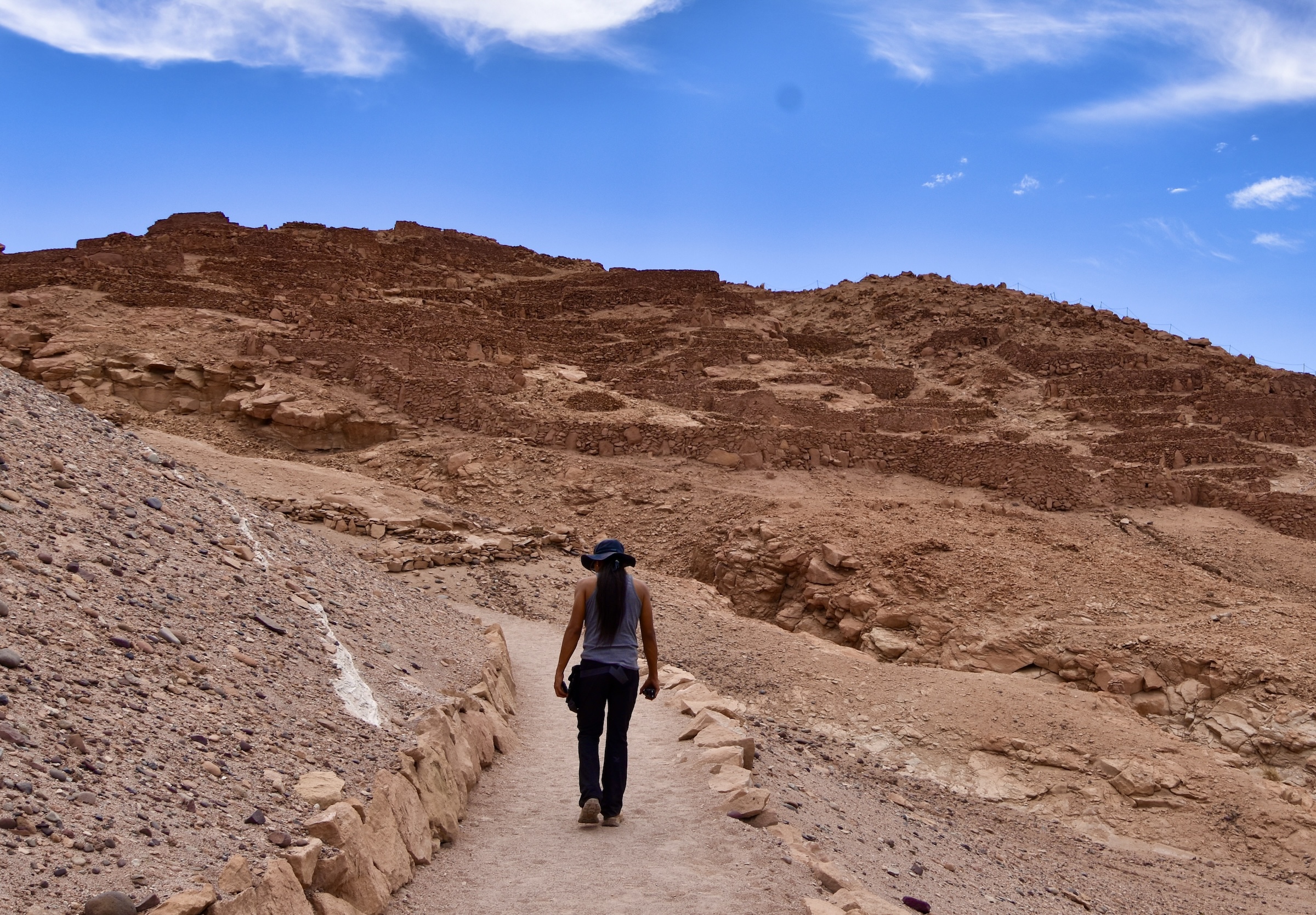
The path first leads up the side of a ridge from where you can get a good view of the ruins of Pucará de Quitor off to the right.
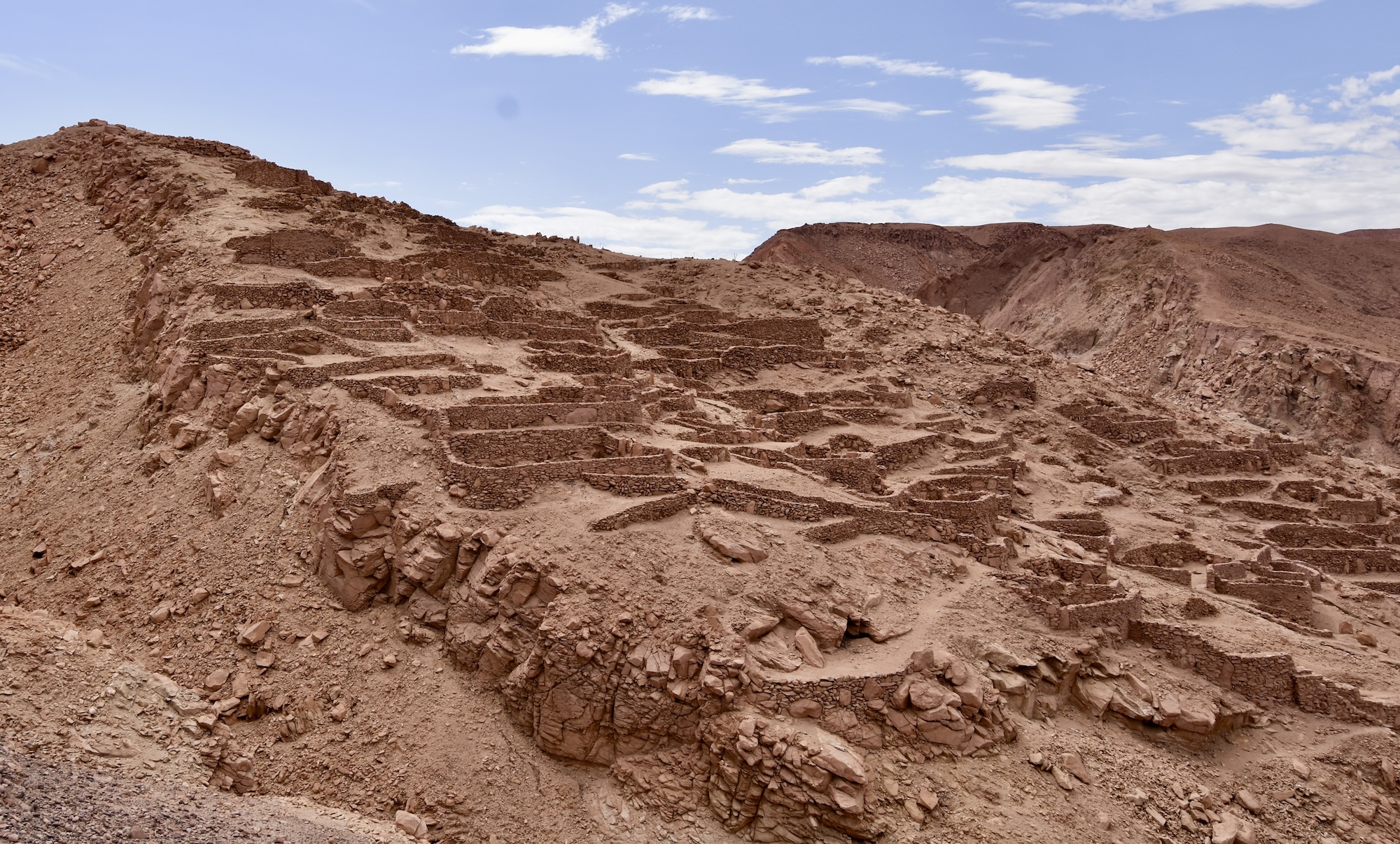
Up, up and up we go until we get to what at first I thought was the top, but is only a resting spot. Note that our AA guide Chris decided against a hat, but never seemed to get overheated or burnt, a real ironman or maybe as they might say in these parts, ‘loco’.
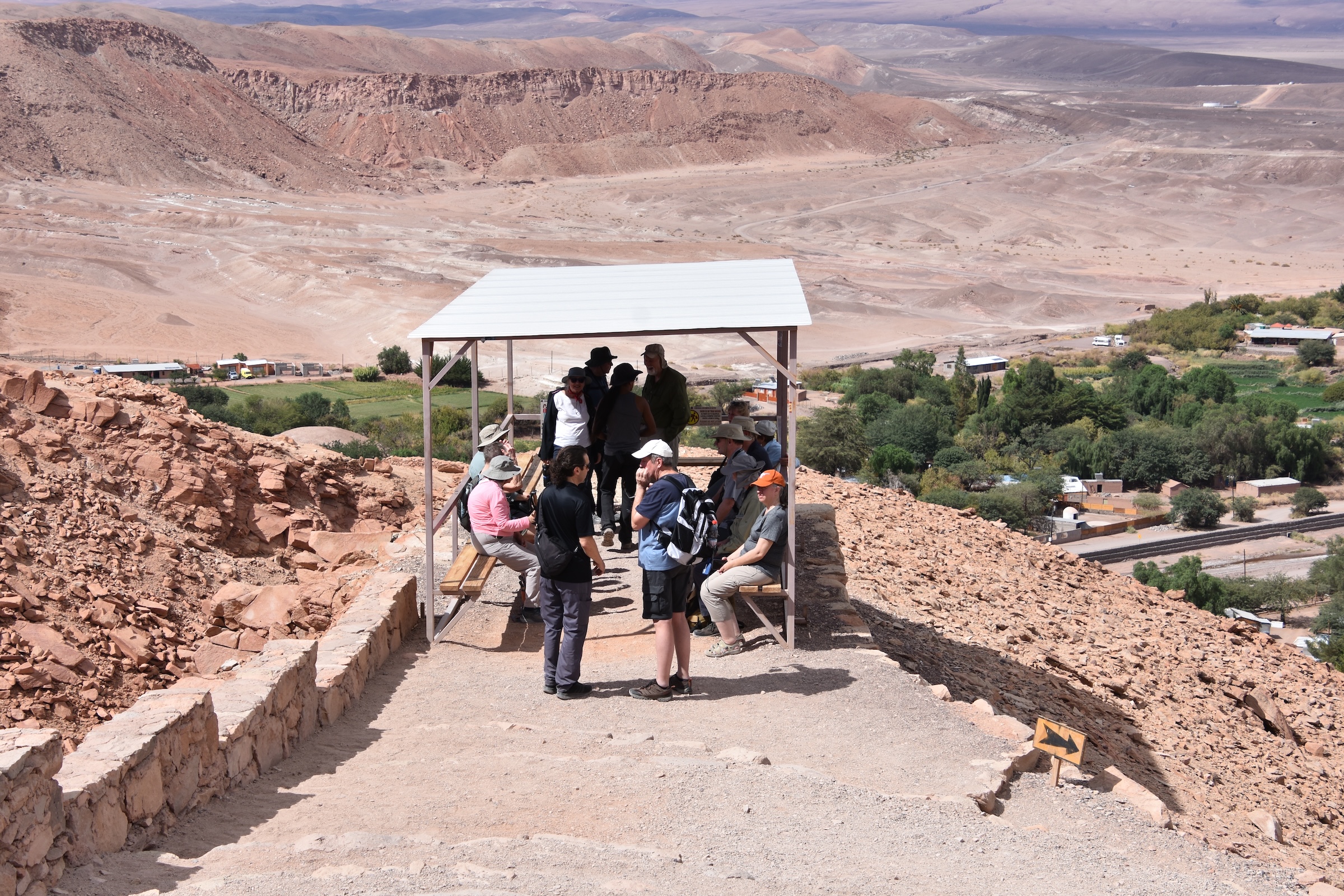
The reward for climbing higher and higher is that you get fantastic views of the Atacama desert including the one that is the header to this post and this one below which is not photoshopped. Somehow the clouds and the sand particles in the air created this filter like effect that reminded me of some of the drawings Alexander von Humboldt made of the volcanoes of Ecuador.
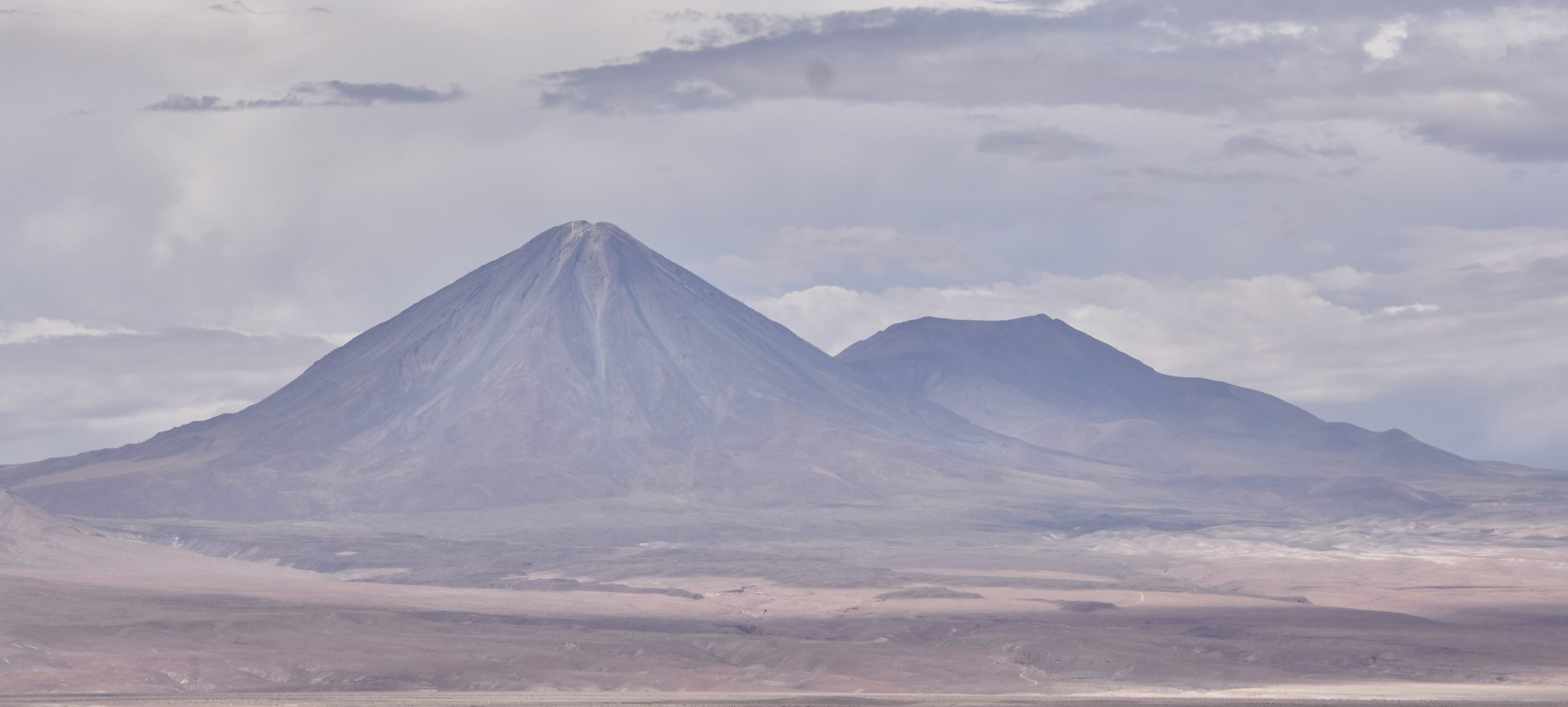
Continuing on, we came to a small set of ruins that I once again thought was the top only to come out on the other side and see that there was still a long way to go. Several of the group opted to end their hike here, but about half of us soldiered on.
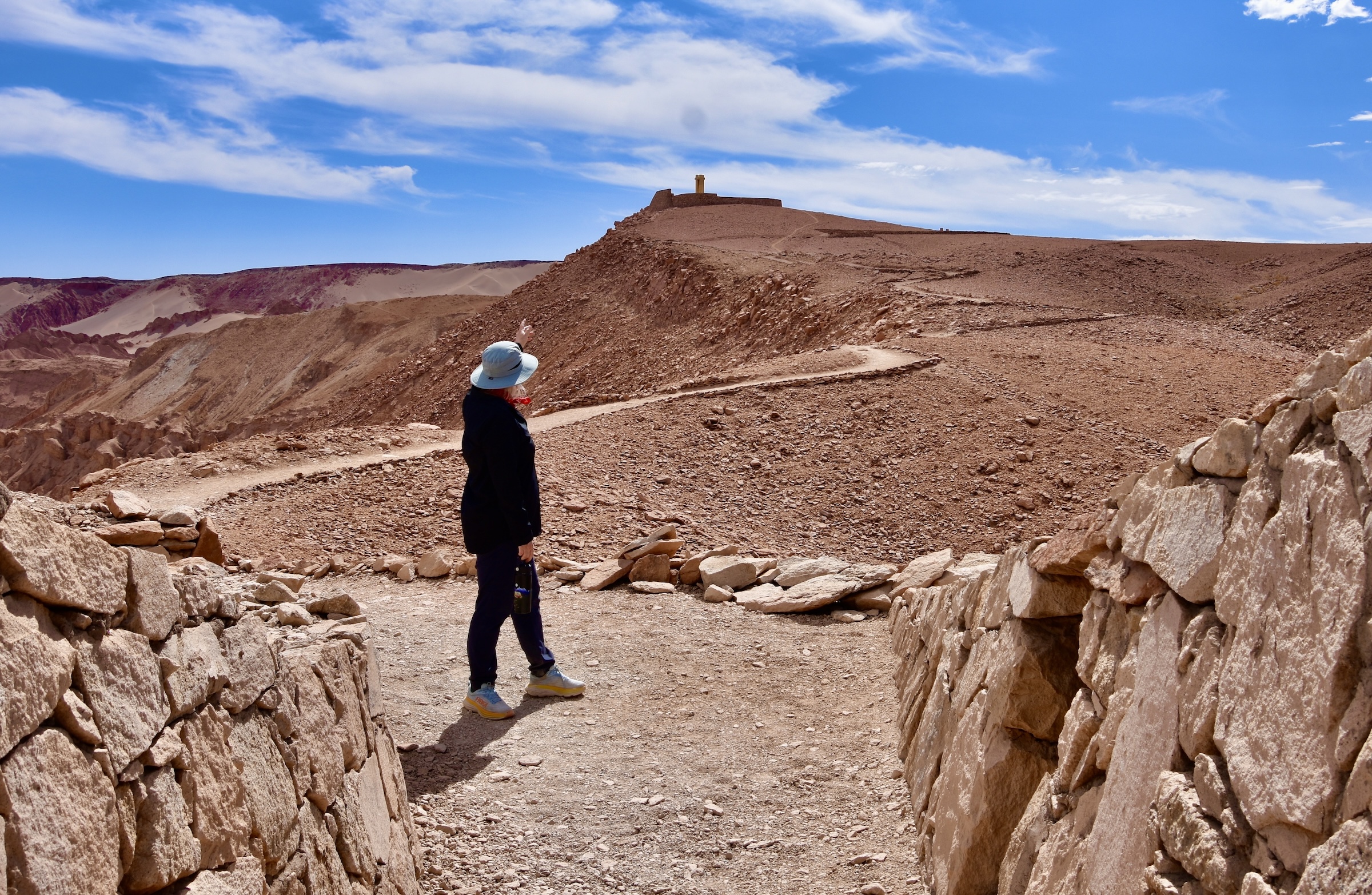
There was a reward for persistence as not far from this spot the trail gave us a look at a really impressive geomorphological formation called the Dragon’s Back. The Atacama desert is known for its unique geology and geomorphology that attracts people from around the world just to photograph them. While we are here at a time when the sun is directly overhead and not casting any shadows, I can only imagine what this would look like at sunrise or sunset. It reminded me of Zabriskie Point in Death Valley.
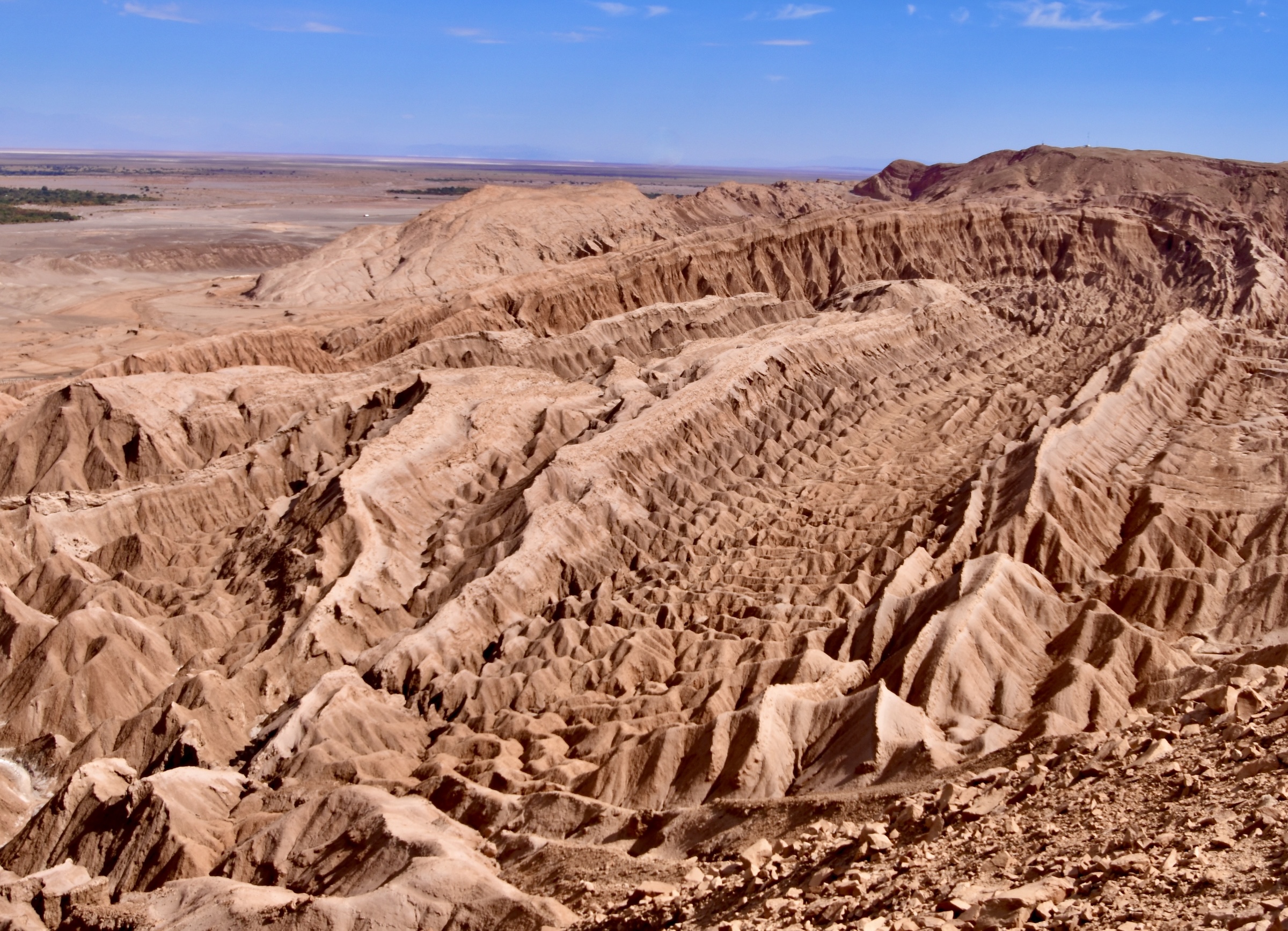
I reached the top a little ahead of the rest so I could get a photo of those who made it all the way.
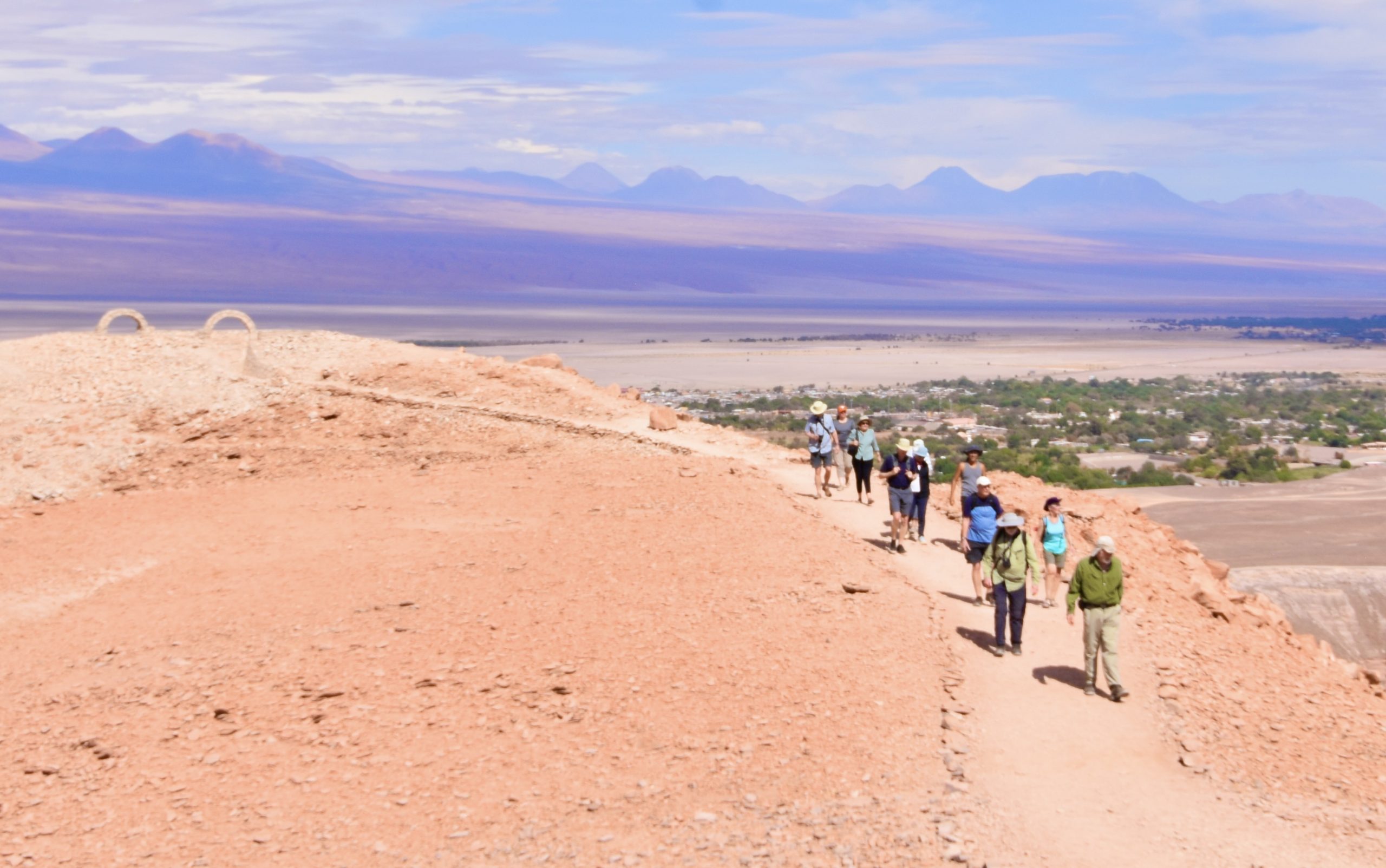
At the top there is a memorial to four of the caciques who were beheaded on this spot by the conquistadors.
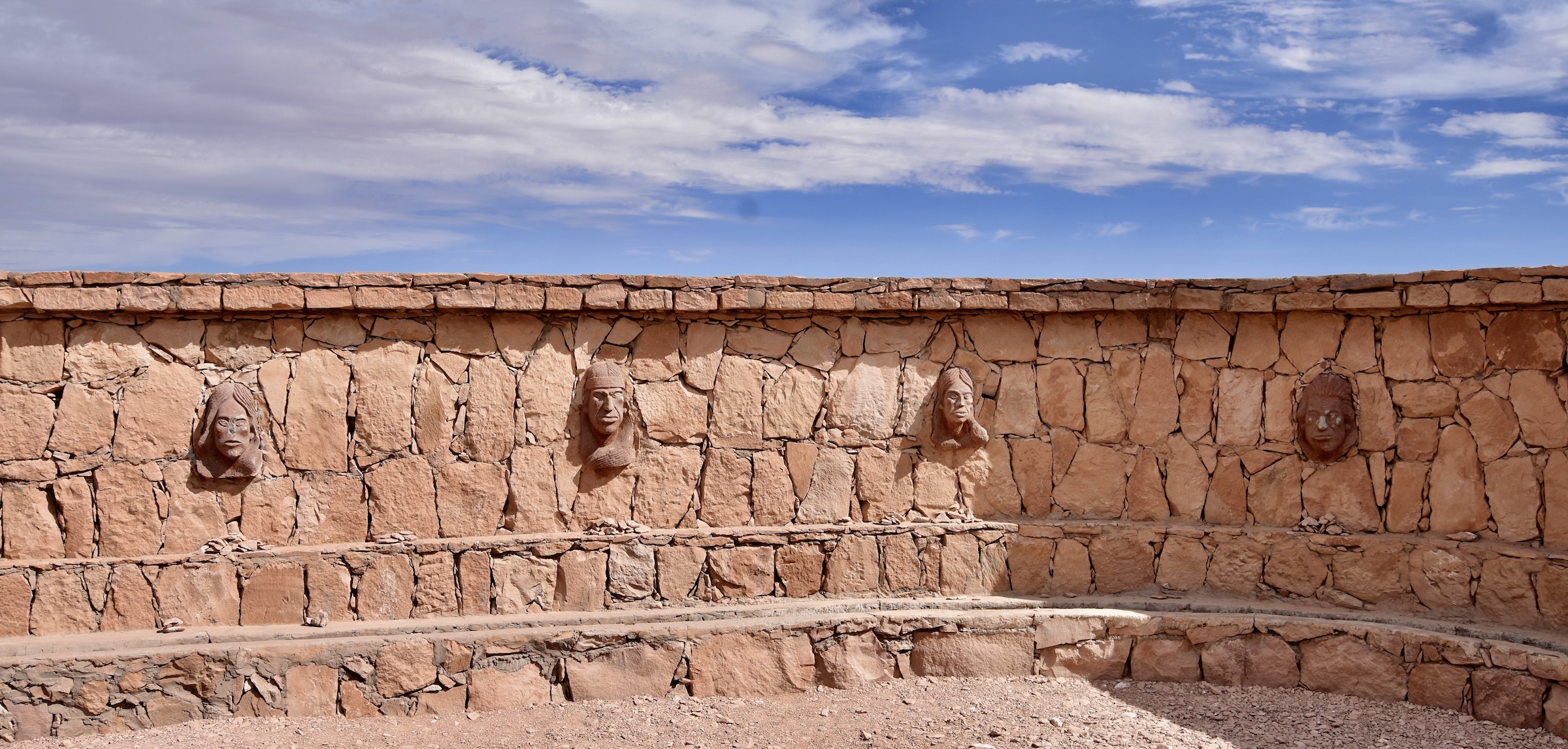
Looking due east from this spot one can spot a line of sand hills exposing yet another side of the Atacama desert.

The reward for successfully making it to the top is getting a photo there and Chris is put to work by most of us.
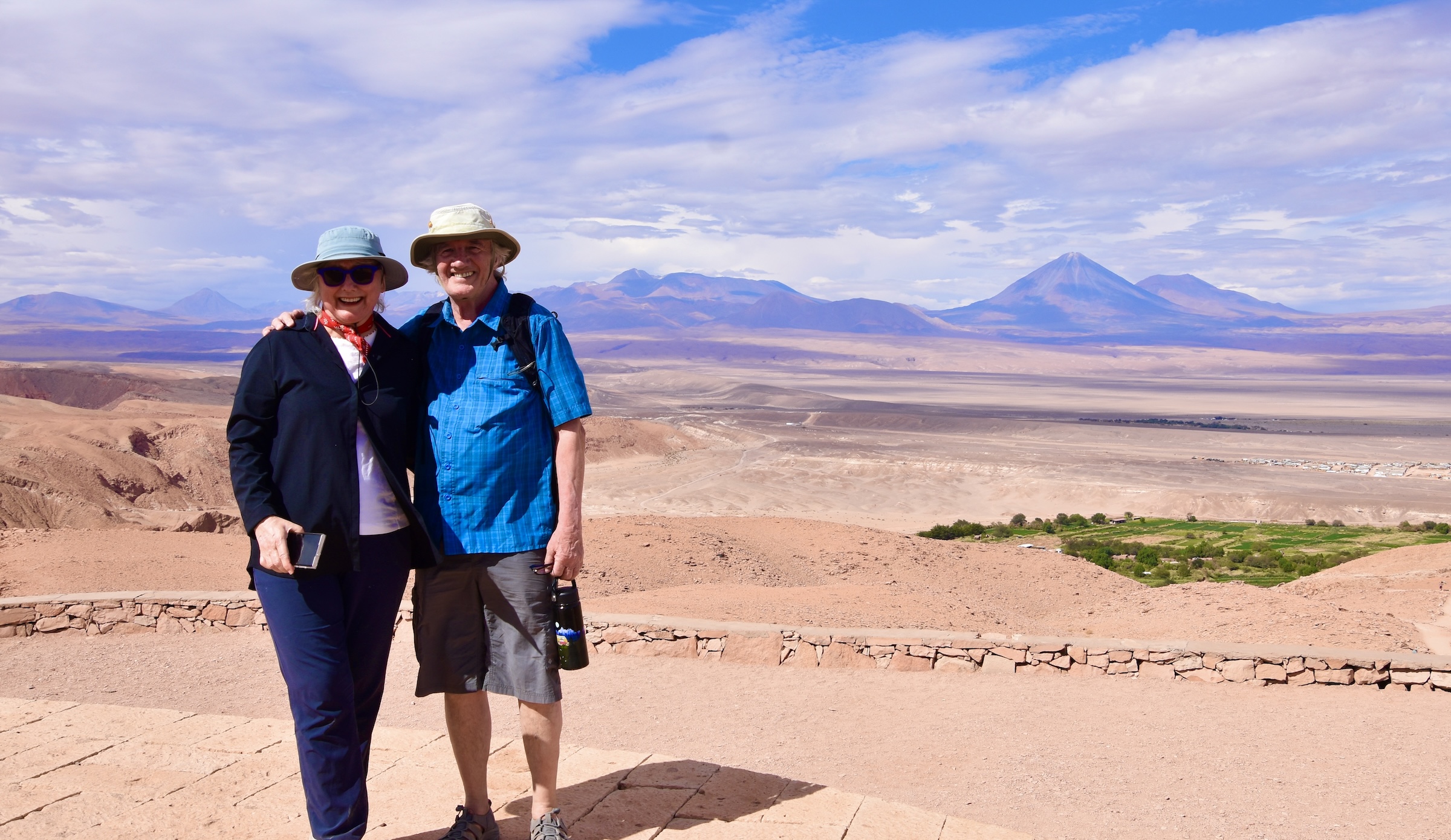
The journey back down is a lot faster than going up and before long Valentin has us on our way to the final sight seeing stop of the day.
Tulor
Tulor is another archaeological site in the Atacama desert, but one both far older and much smaller than Pucará de Quitor. It contains the remains of a village that once thrived on the banks of the San Pedro River over 2,300 years ago until the river changed course and the place was abandoned around 300 CE. It was then covered over by sand and not rediscovered until 1956. The sand has been cleared away from the foundations of dozens of interconnected dwellings and a path has been laid out that leads to a viewing platform where you can observe them. Fortunately this path is very flat and as it was getting late in the day that was a welcome thing.
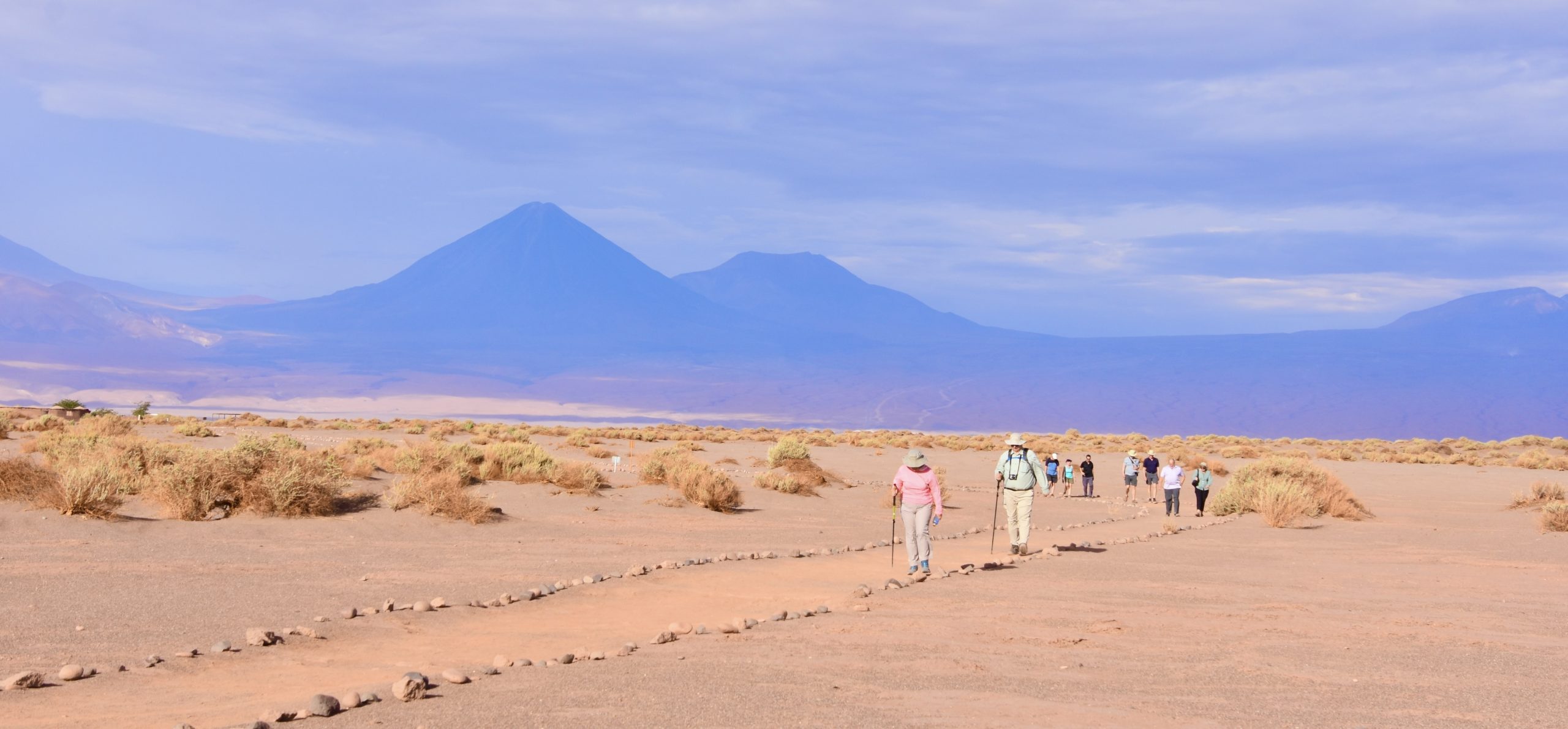
Frankly, Tulor is quite underwhelming after Pucará de Quitor, but I’m glad we saw it anyway.
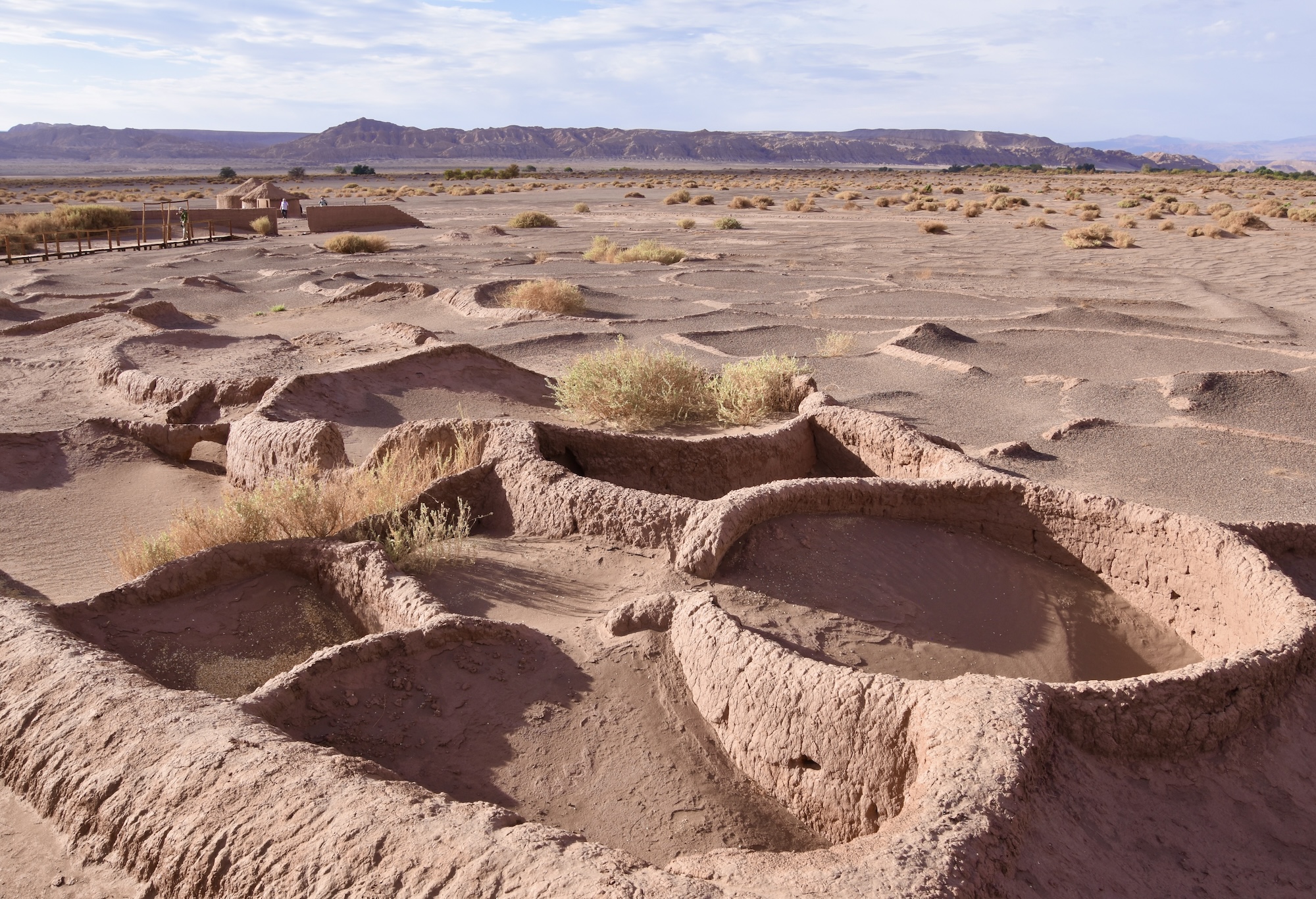
A number of buildings have been reconstructed to give visitors an idea of what these houses would have looked like before they were abandoned.
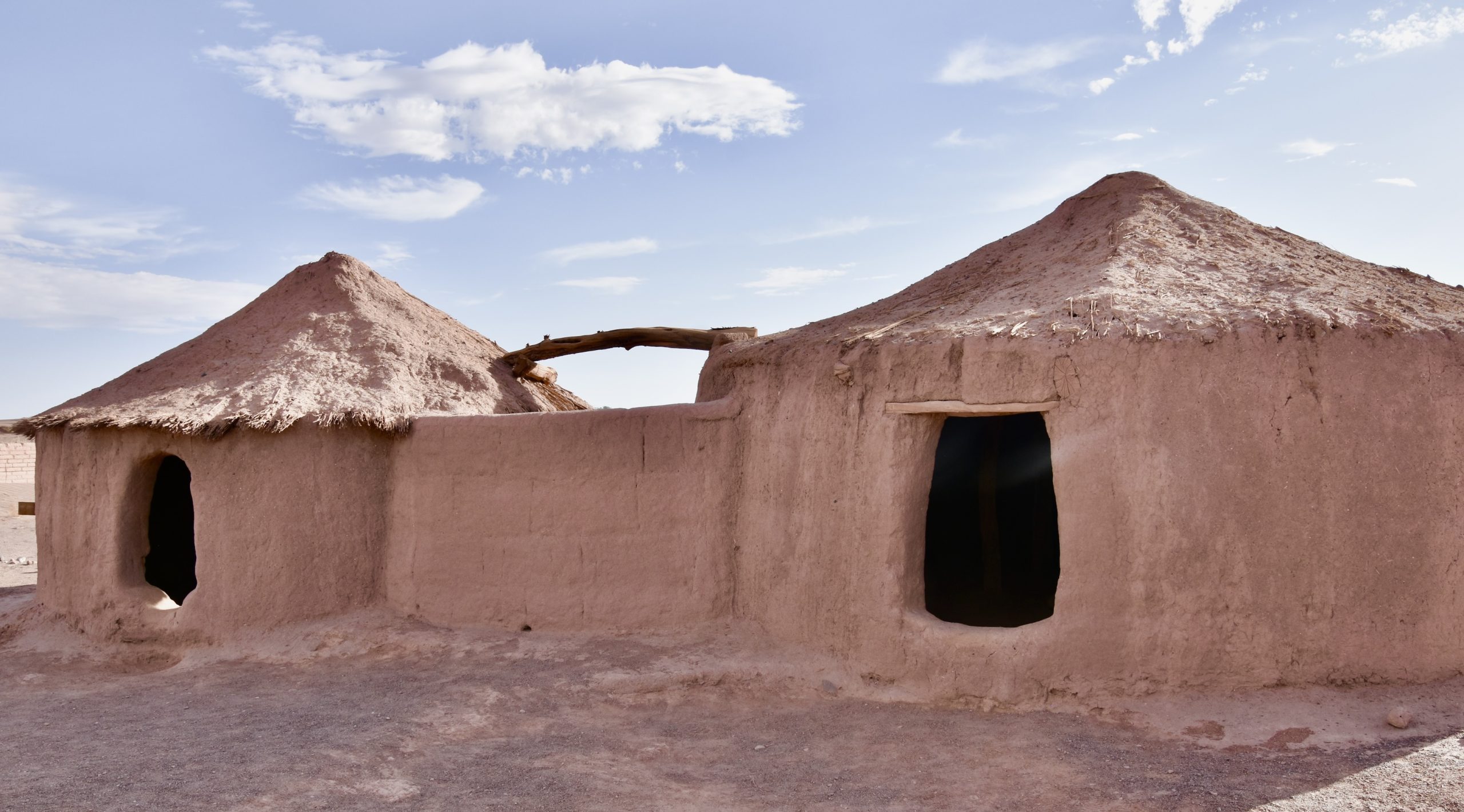
It had been a very productive day in terms of getting just a bit of insight into the many facets of the Atacama desert, but a bit tiring, so many were happy to avail themselves of the outside shower back at the hotel or one of the swimming pools.
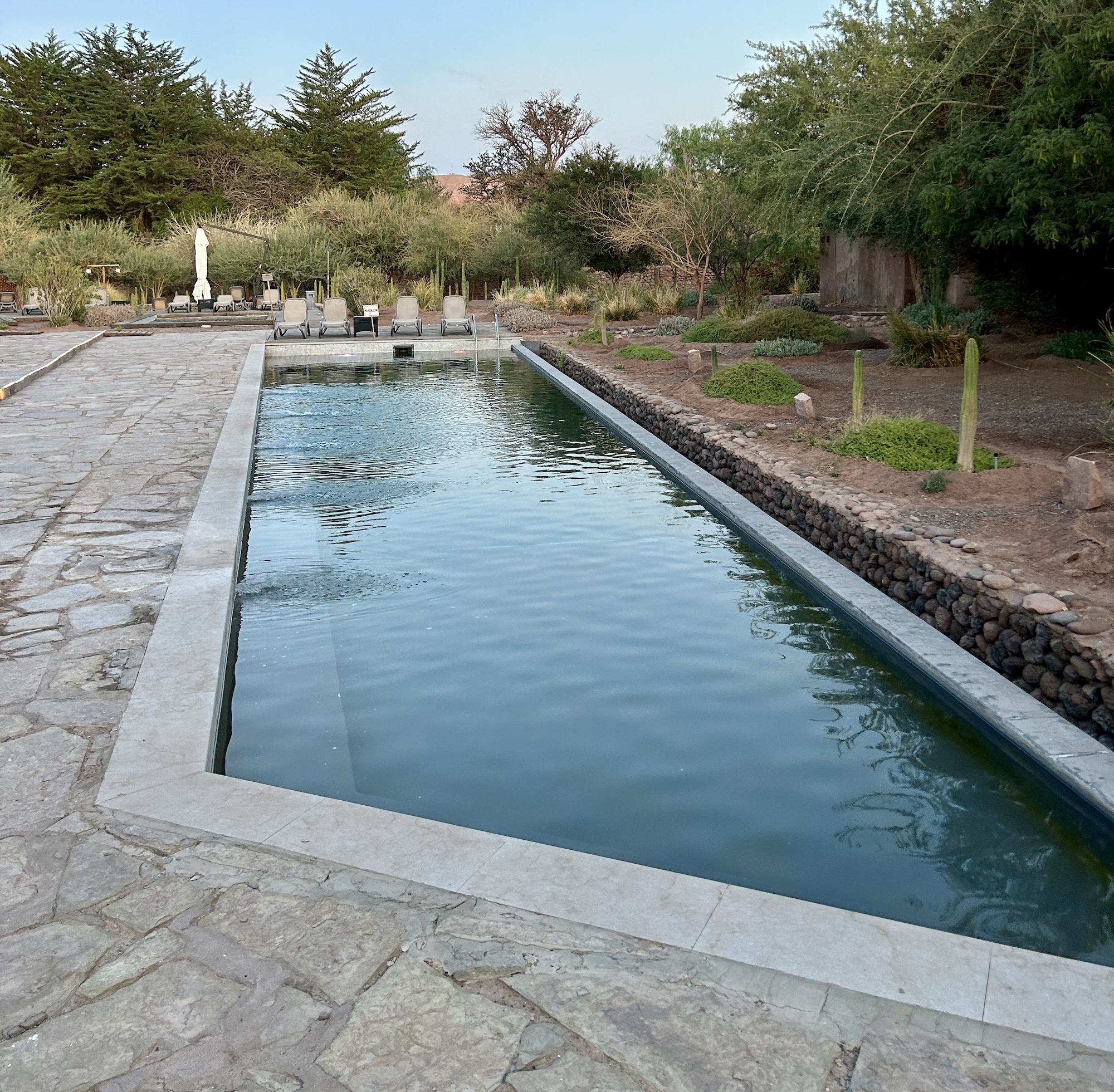
That evening Chris took us into the centre of San Pedro Atacama which has no paved roads, is very dusty and has a bit of the feel of a wild west town. Whereas we had seen almost nobody else during our travels, the streets here were packed, mostly with people in their 20’s and 30’s clearly looking to party.
Avoiding the bars where you can get drunk on pisco sours for $10.00 or less, Chris had a reservation at the highly rated Adobe Restaurant which is family run and specializes in Chilean cuisine.
Merken is a blended spice mix that is a cornerstone of Chilean cuisine. It is not overly hot and has a nice smoky flavour. This is chicken merken which was Alison’s main.
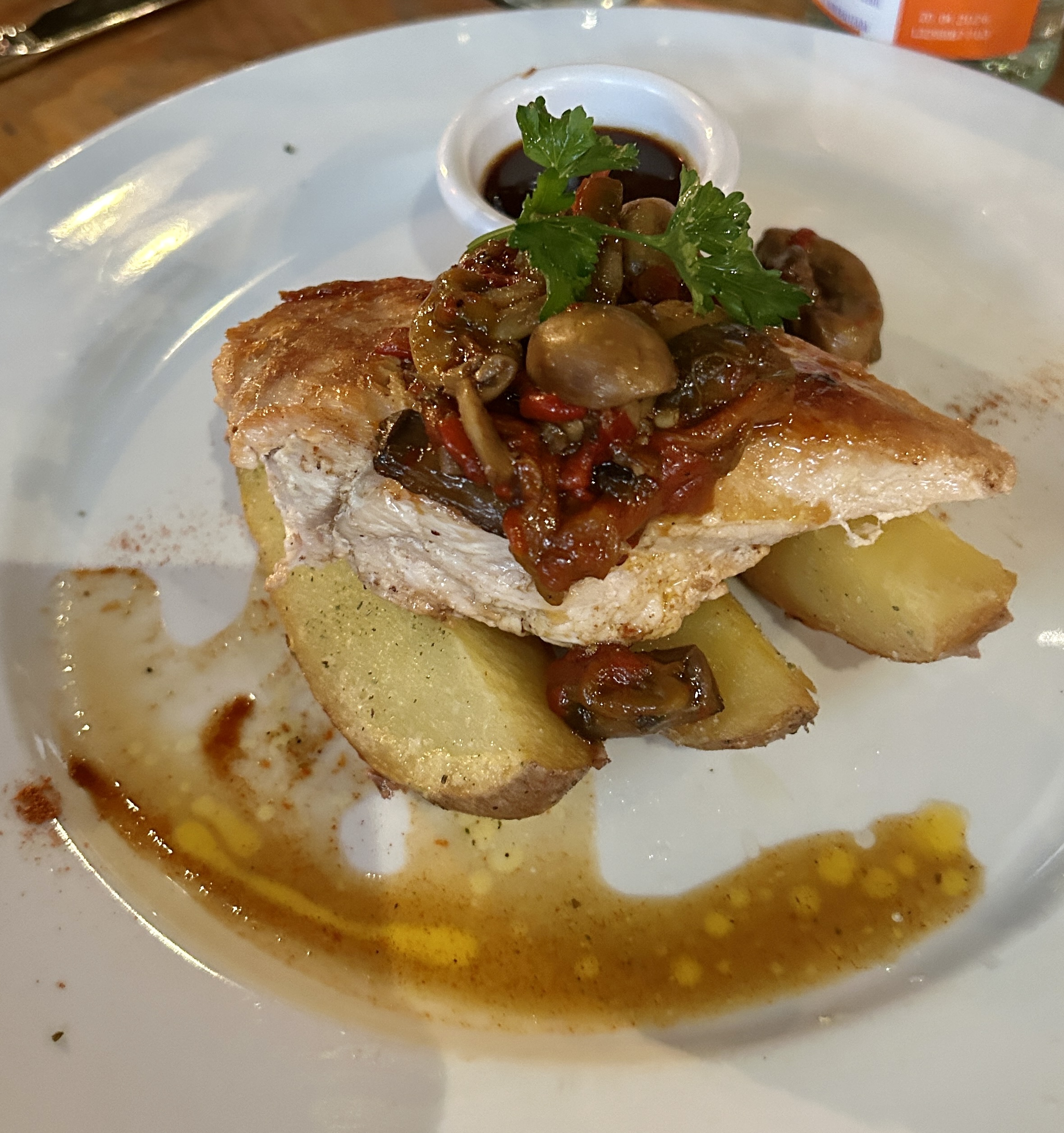
I opted for another variety of Chilean cuisine, pil pil which can be almost any meat or seafood that is cooked in a round ceramic bowl and served absolutely piping hot. This is a beef filet and it was the best piece of beef I had on the tour, just loaded with that meaty, juicy flavour that fills your mouth when you bite into it.
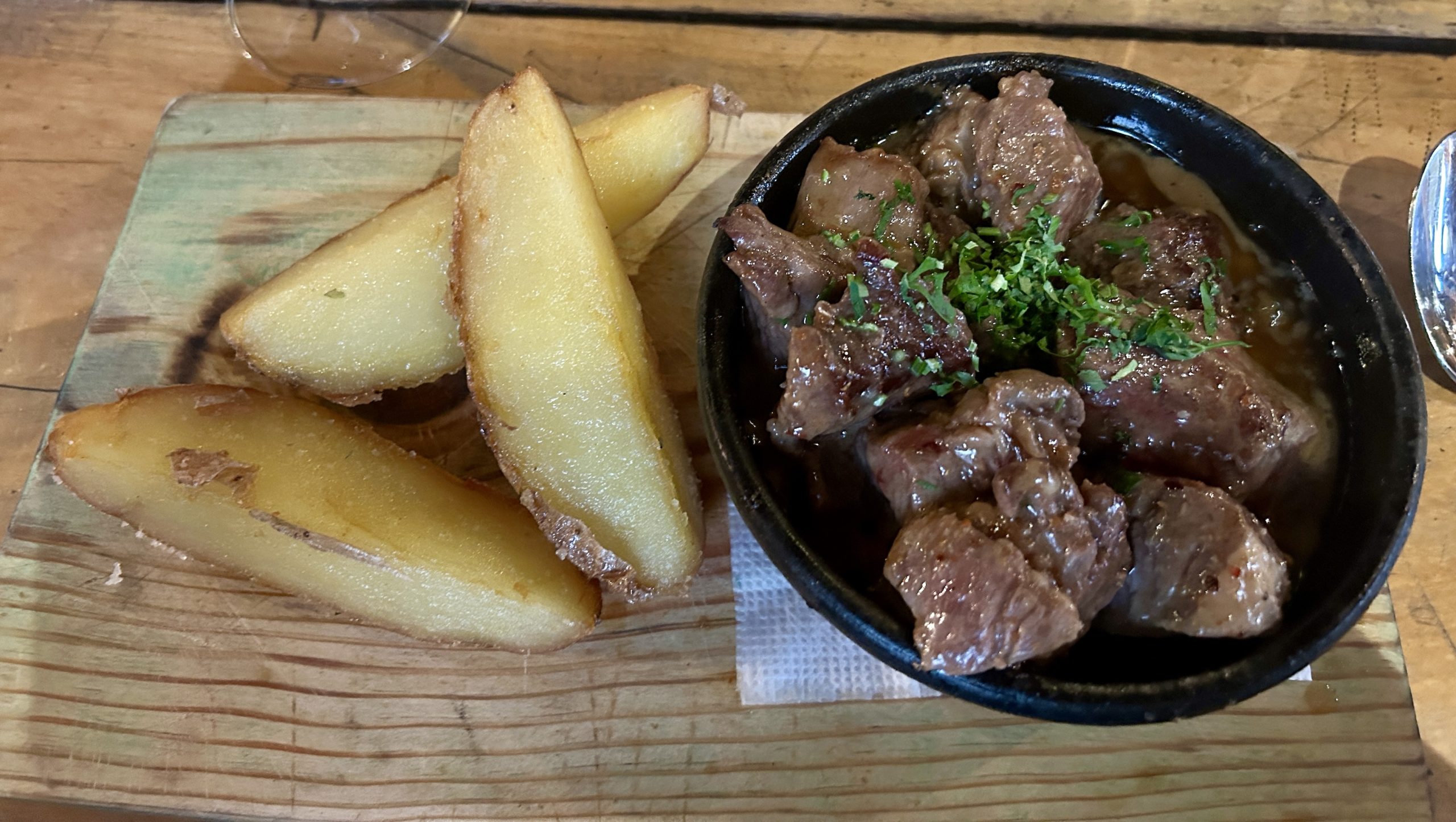
And of course we had to have another Chilean specialty, carmenere to accompany this meal.
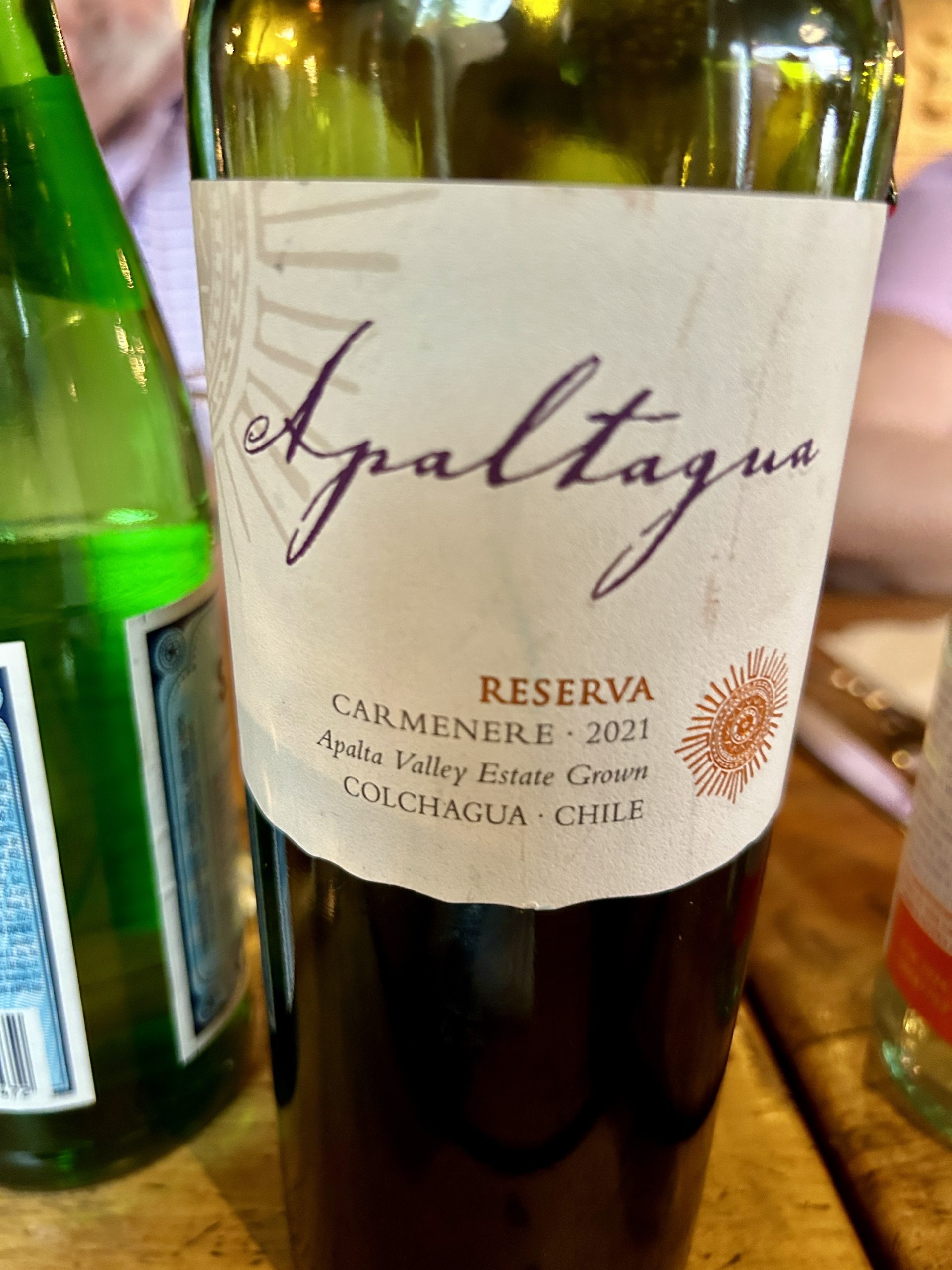
All told it was one hell of a day in the Atacama desert and tomorrow will bring even more as we visit the largest geyser field in the Southern Hemisphere. Hope you’ll join us.


